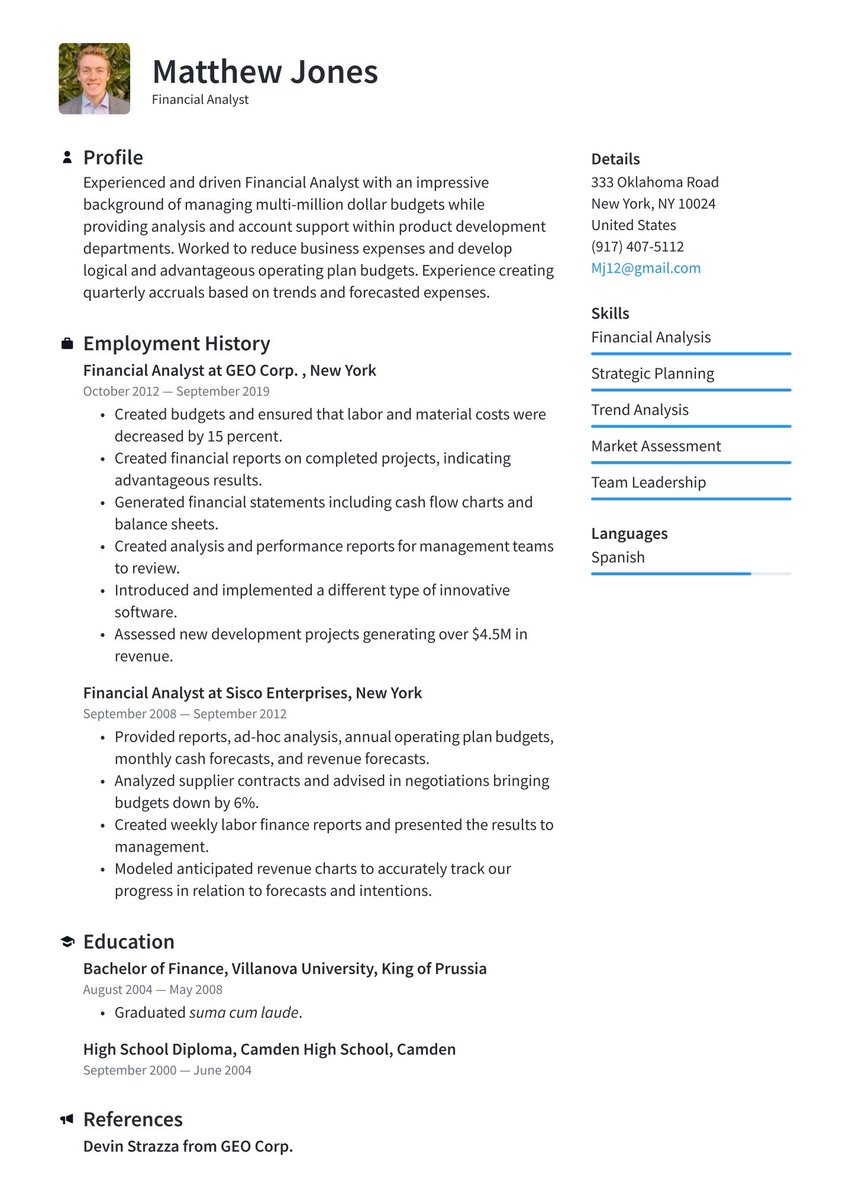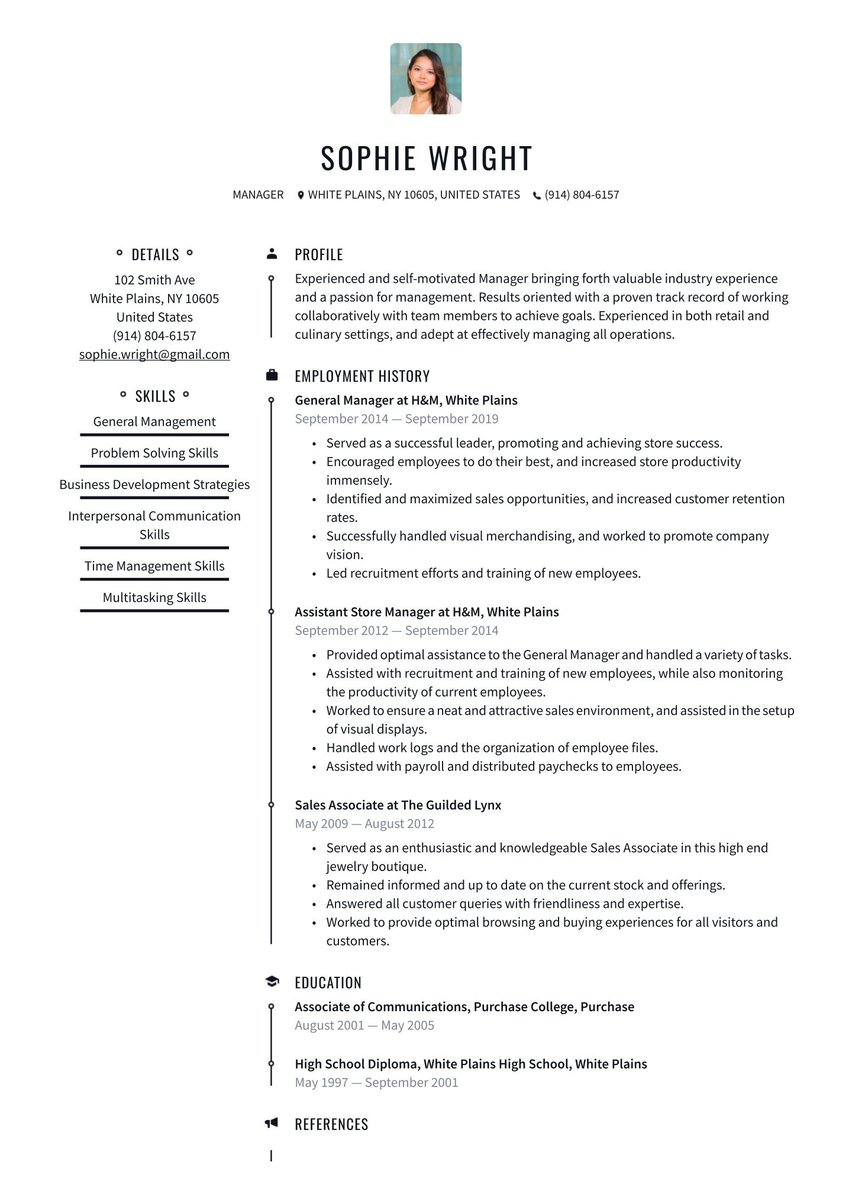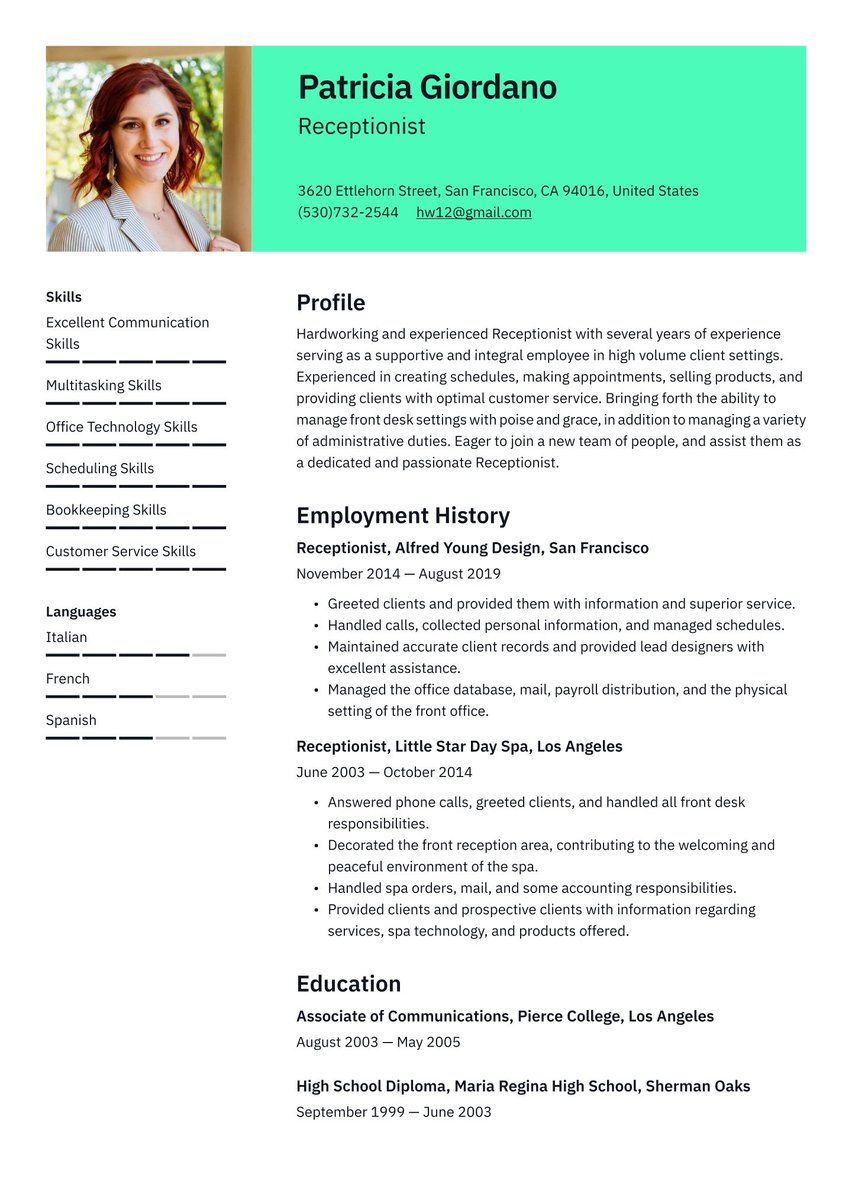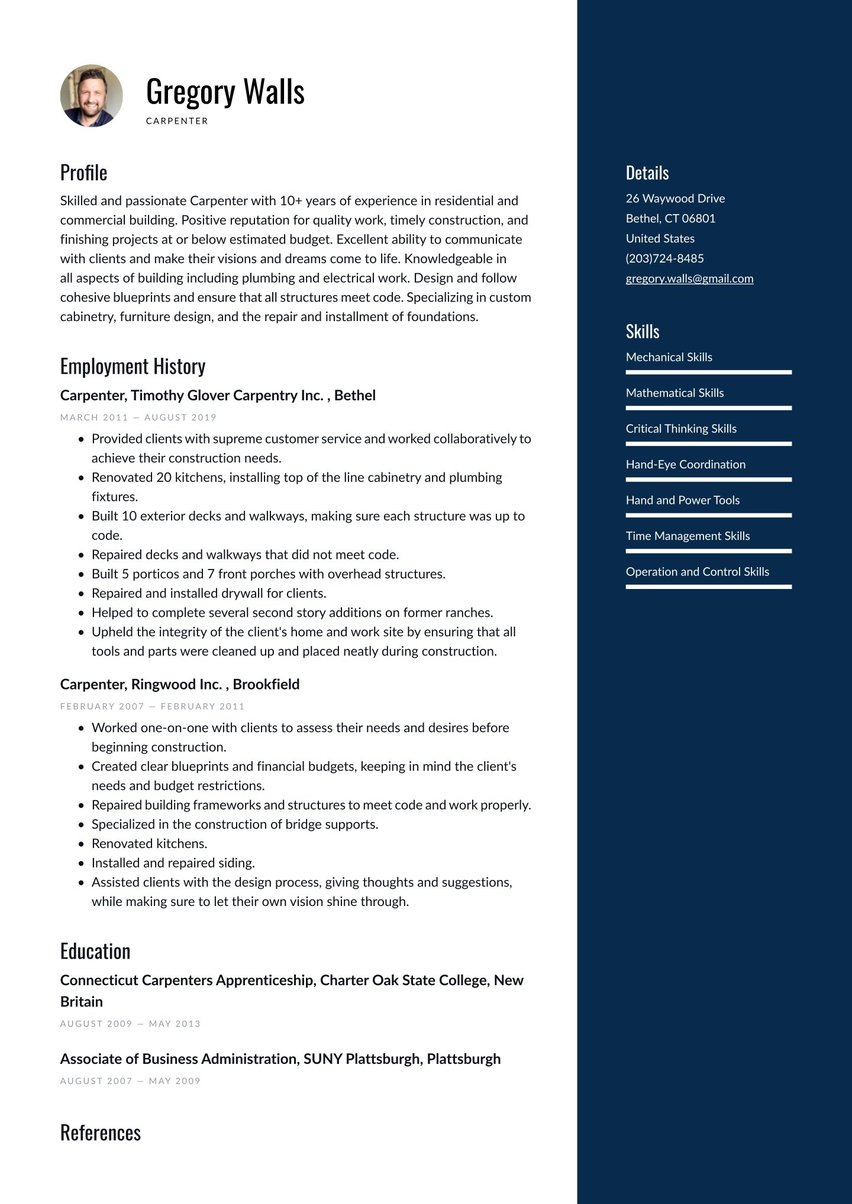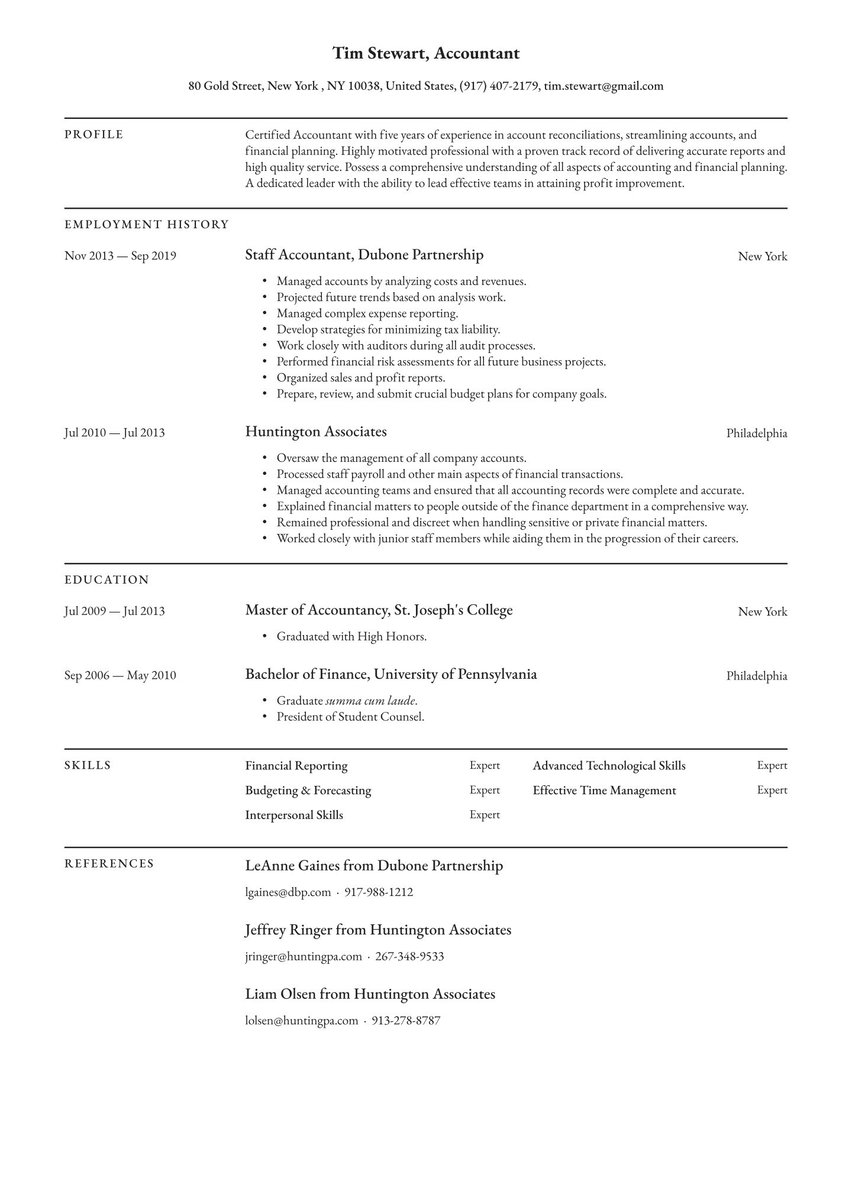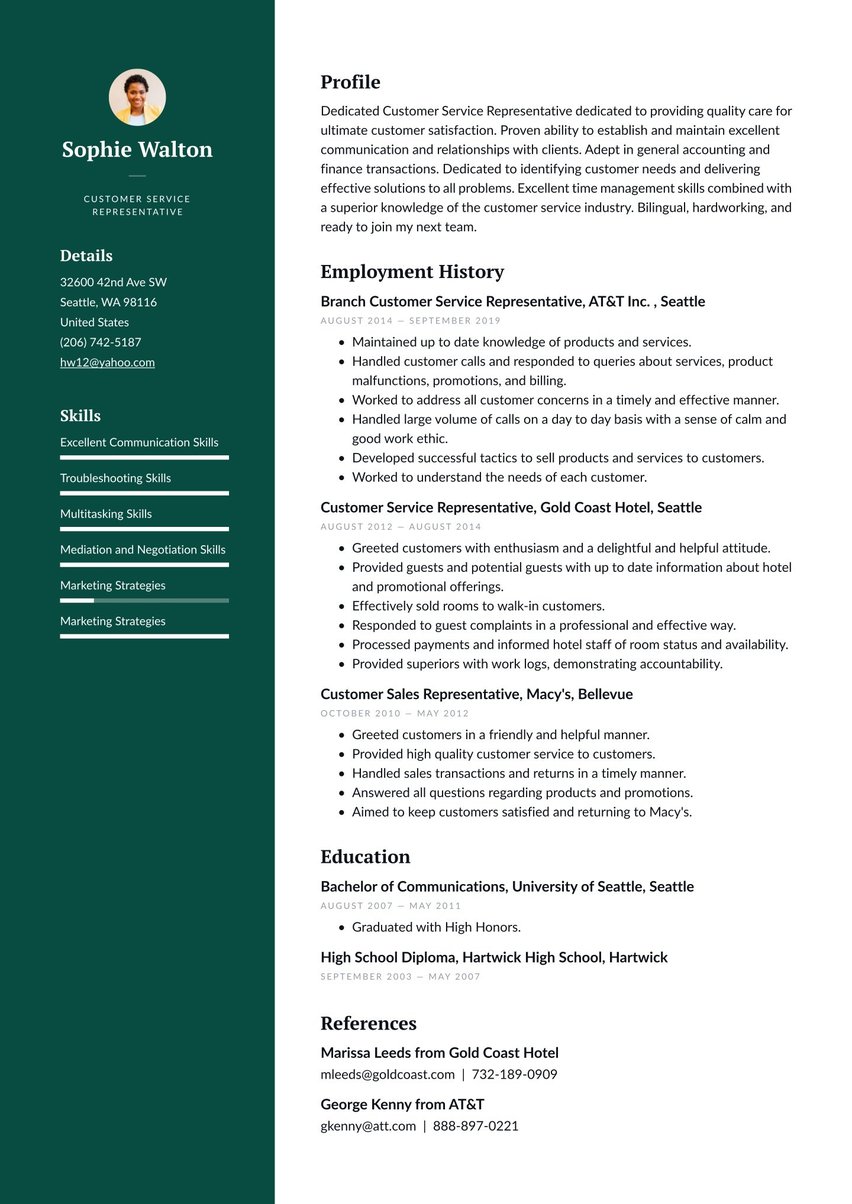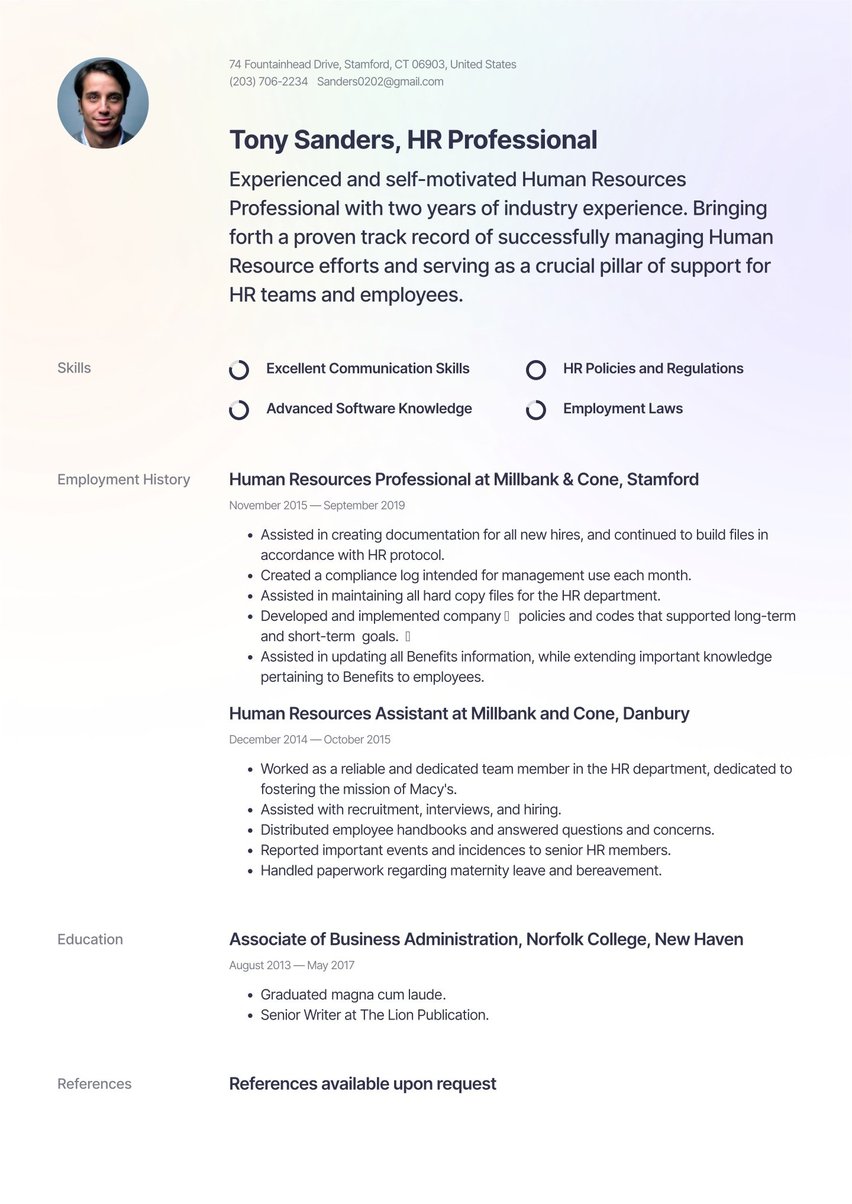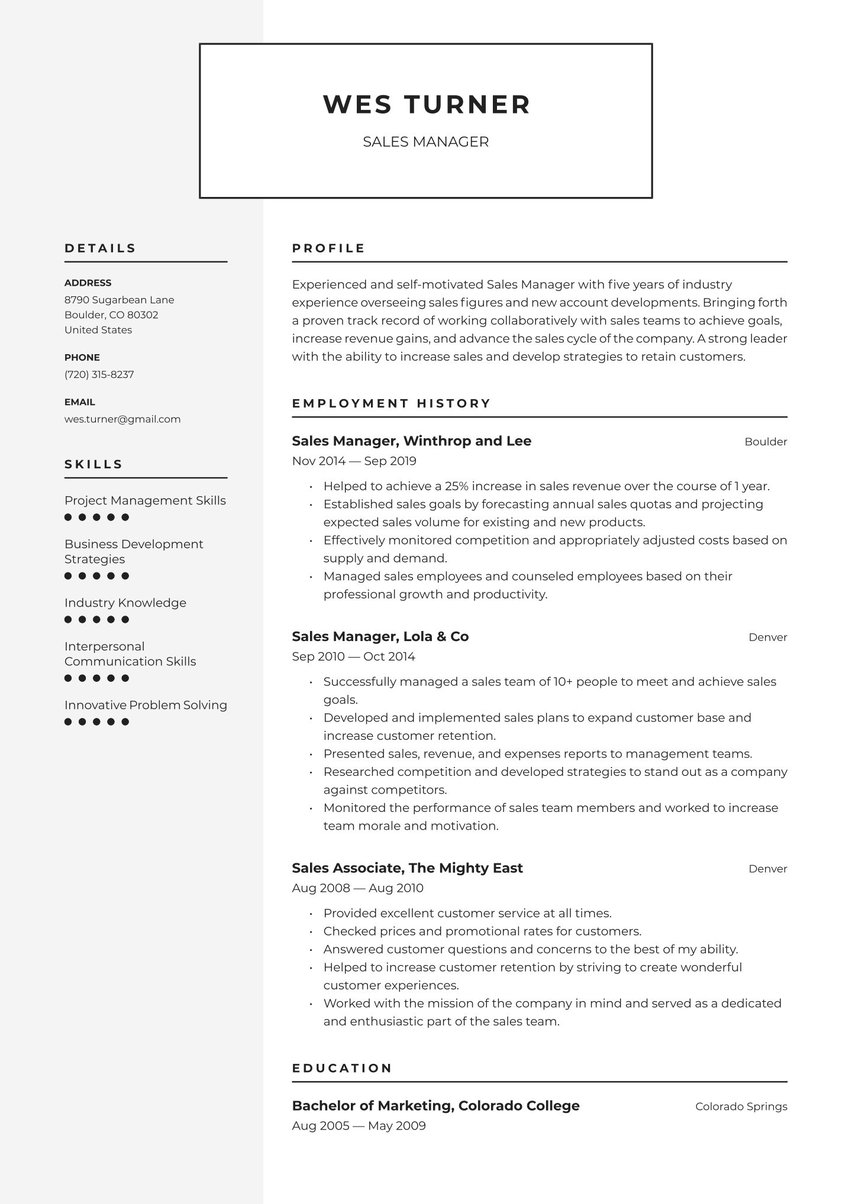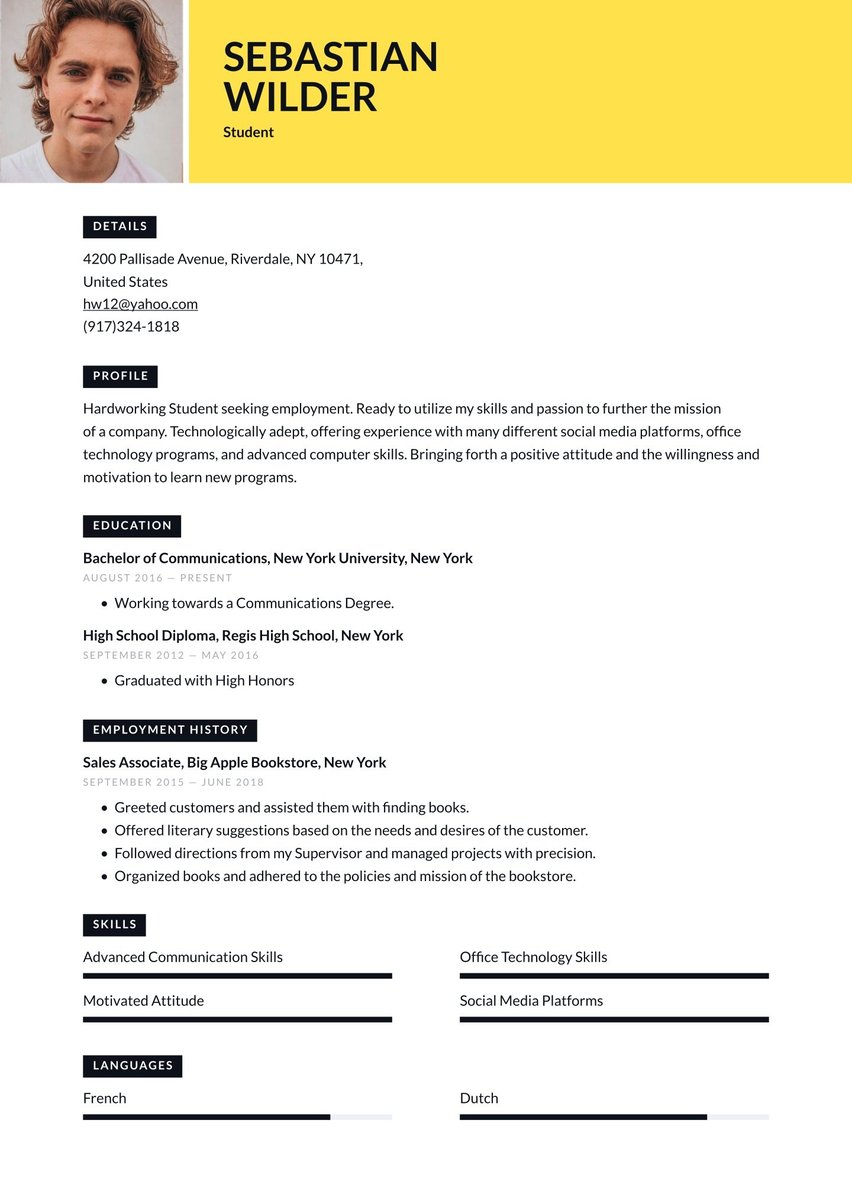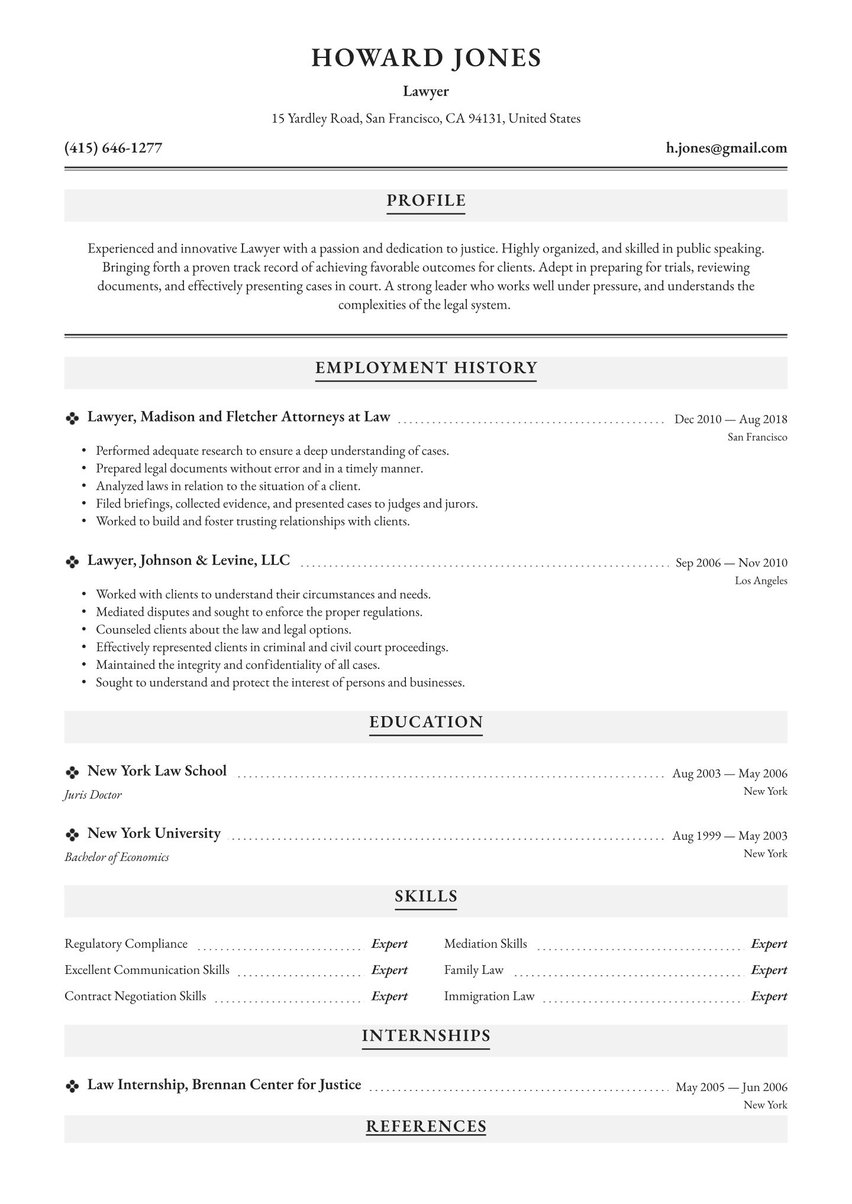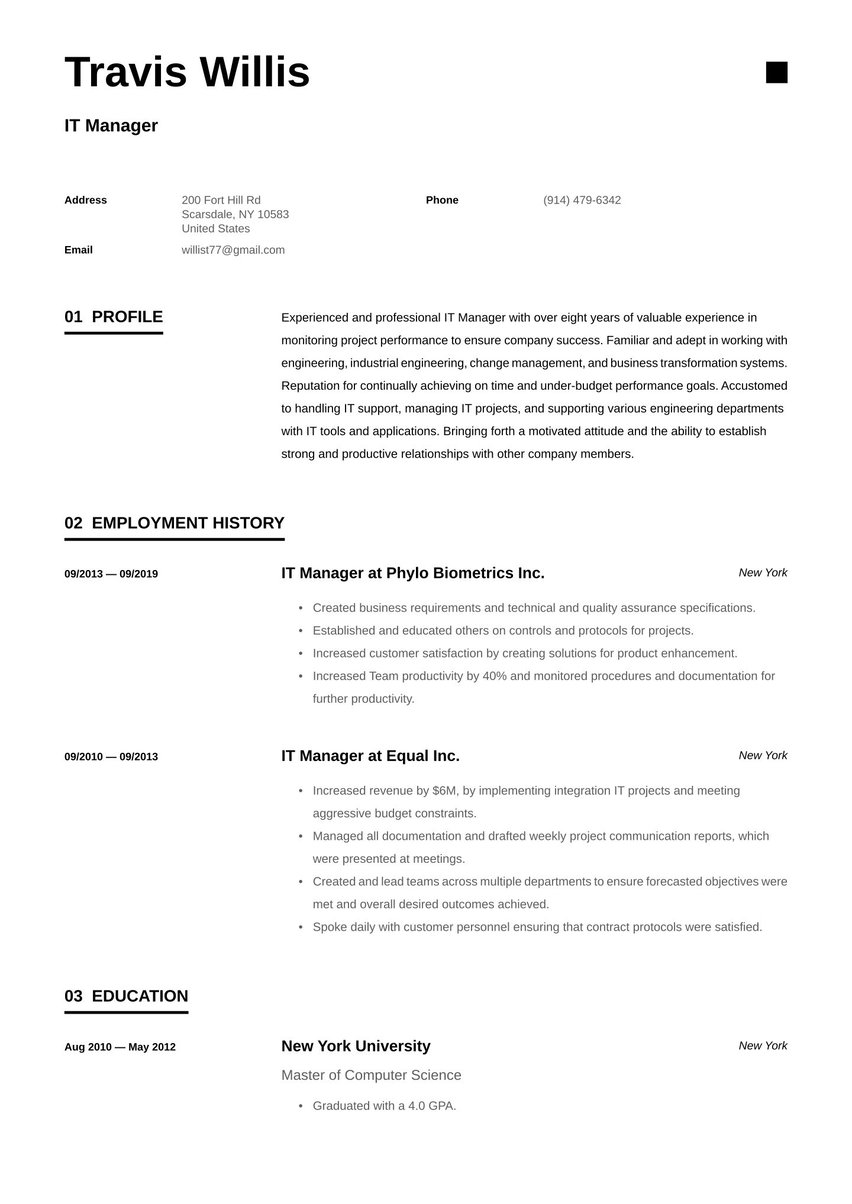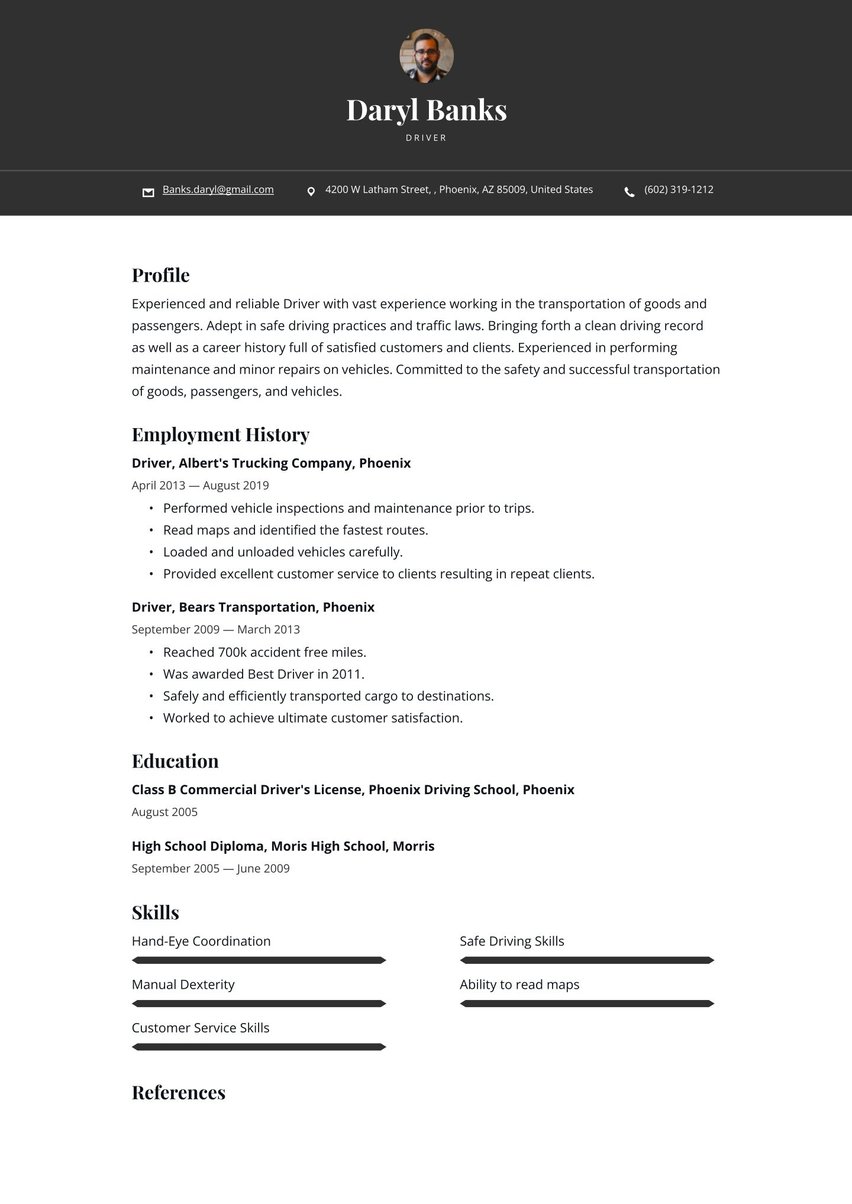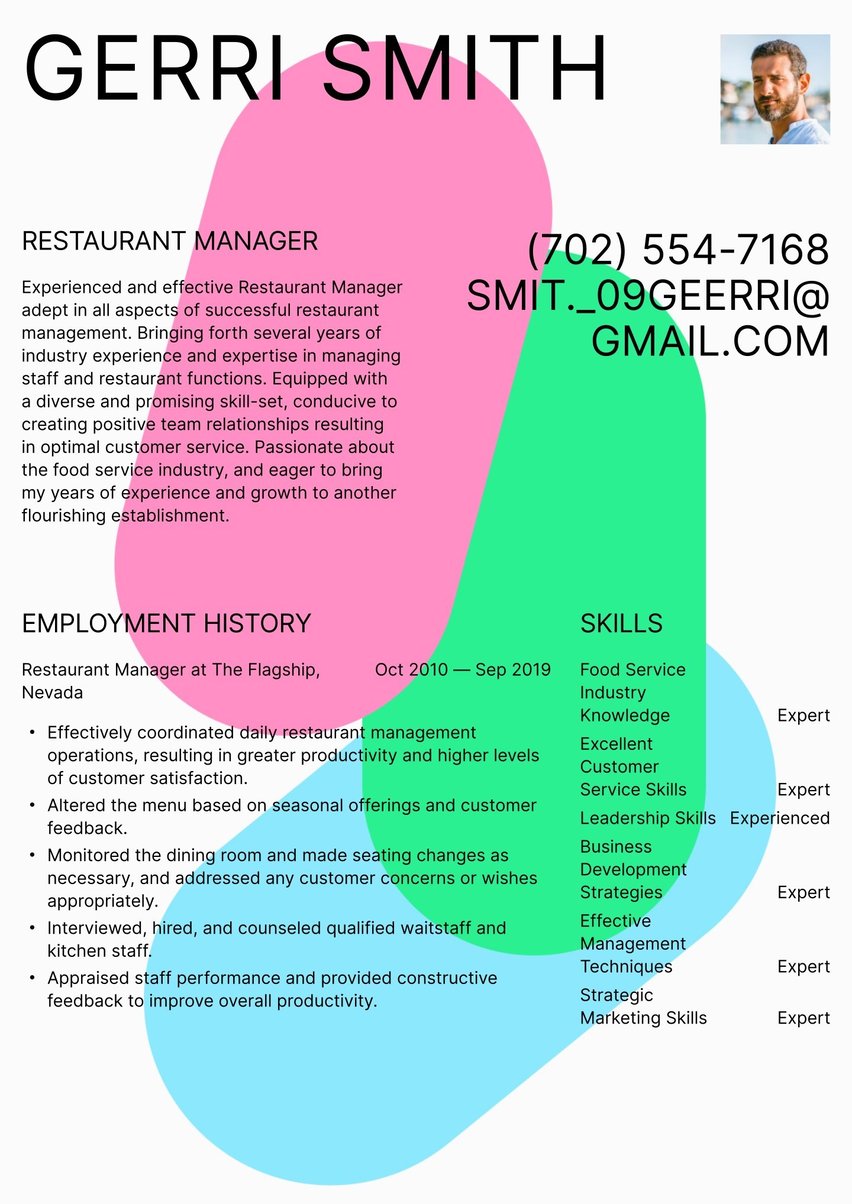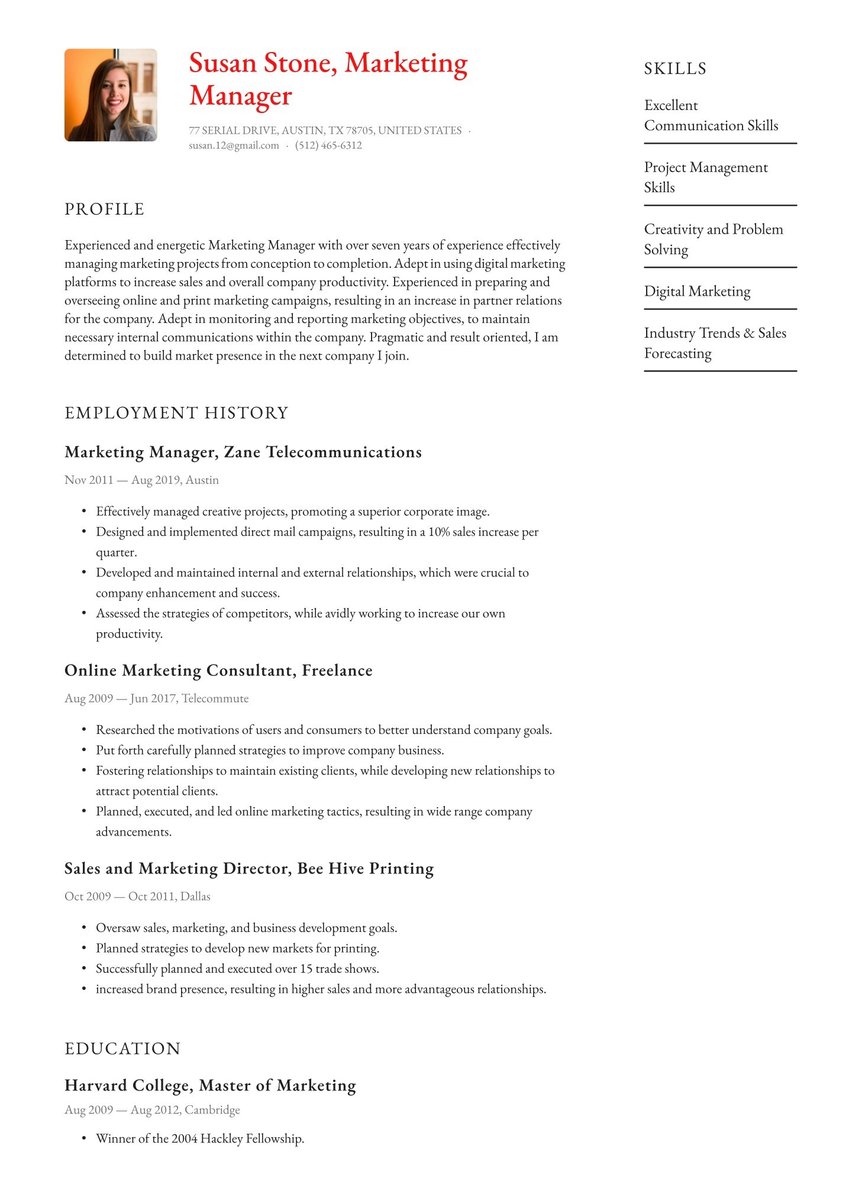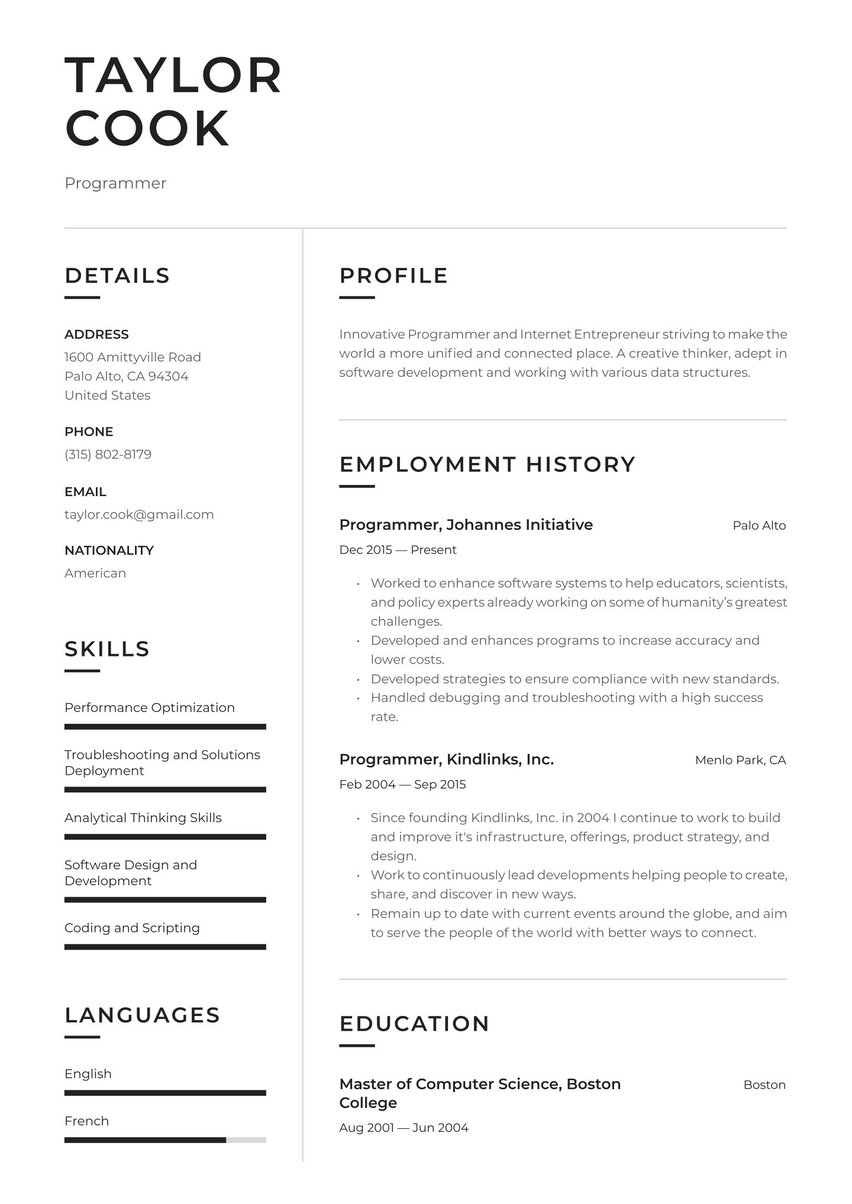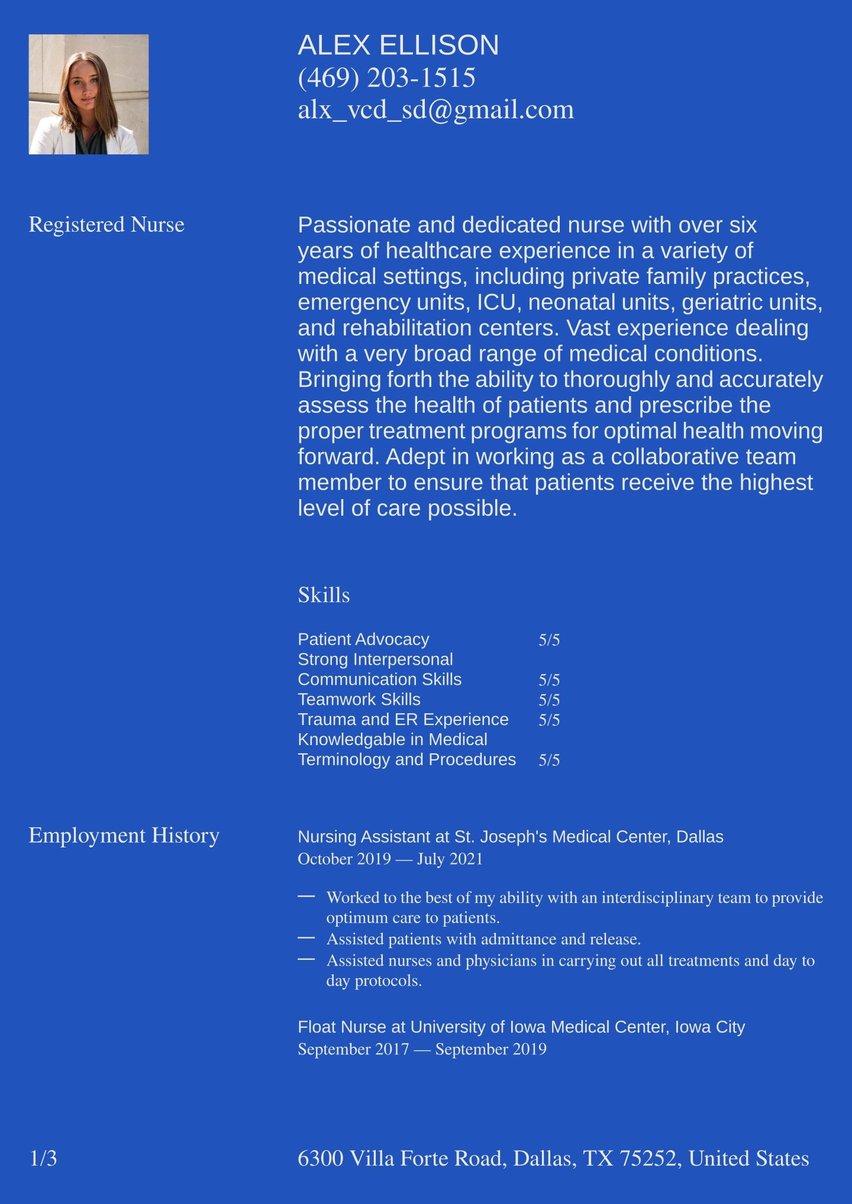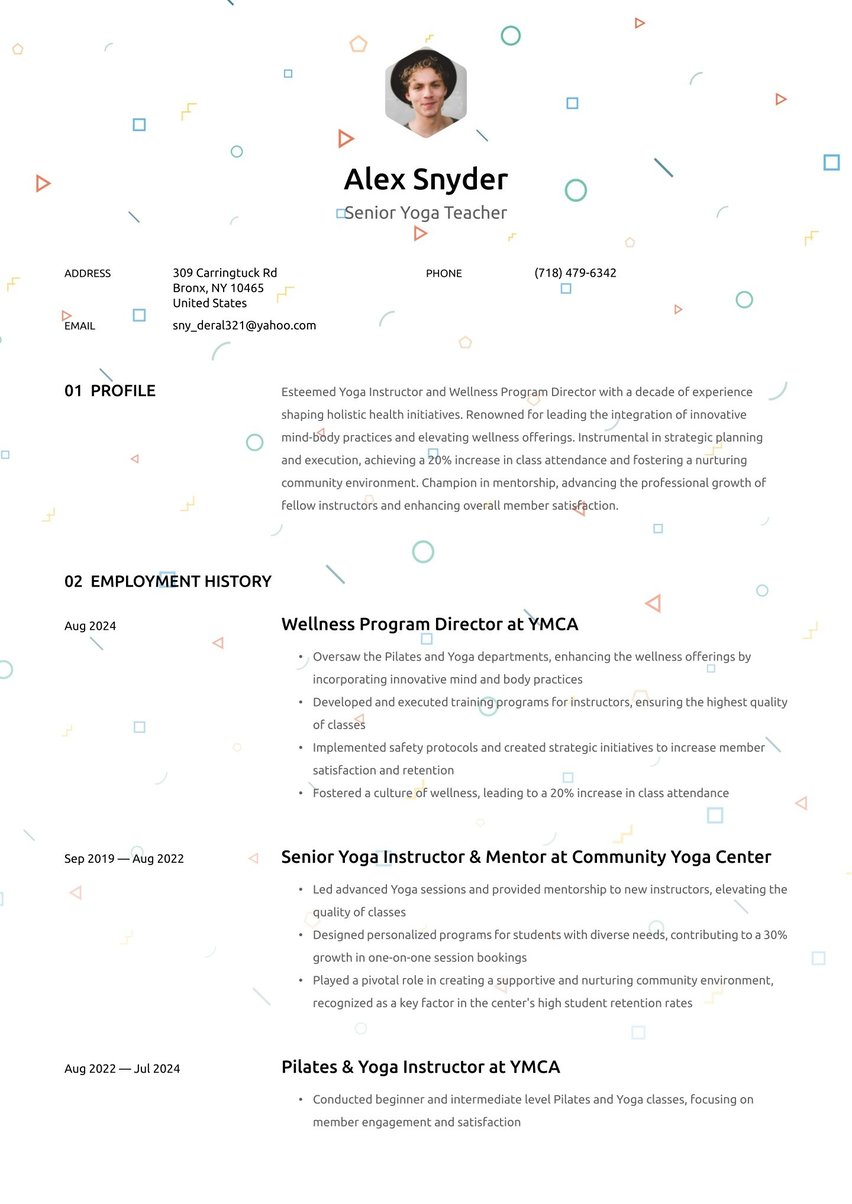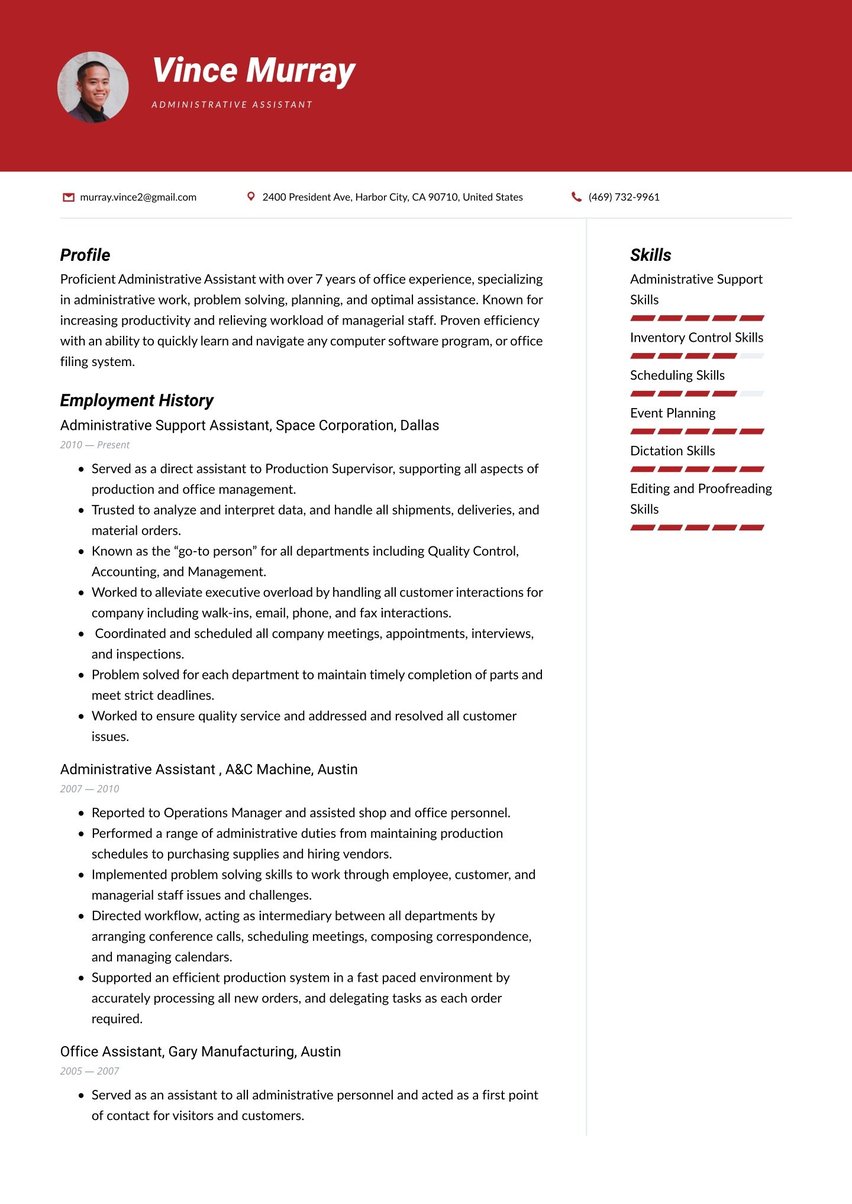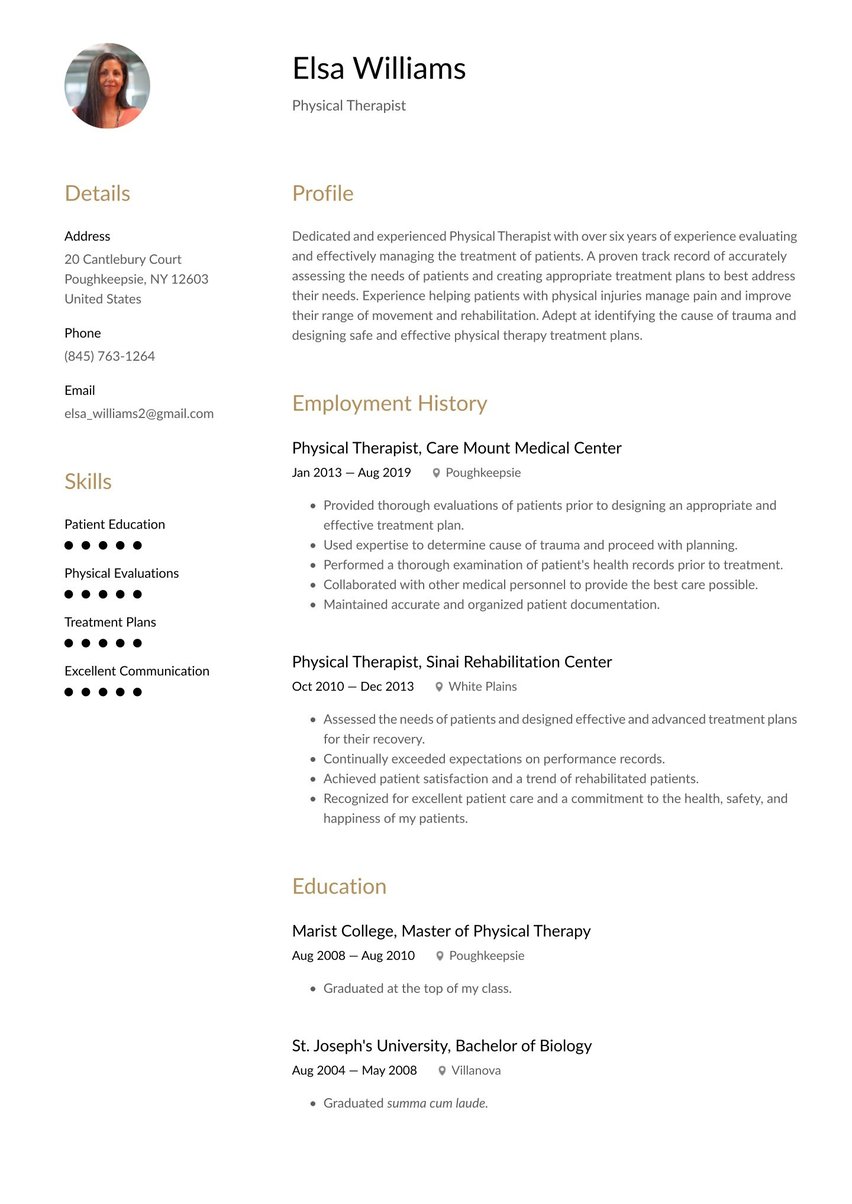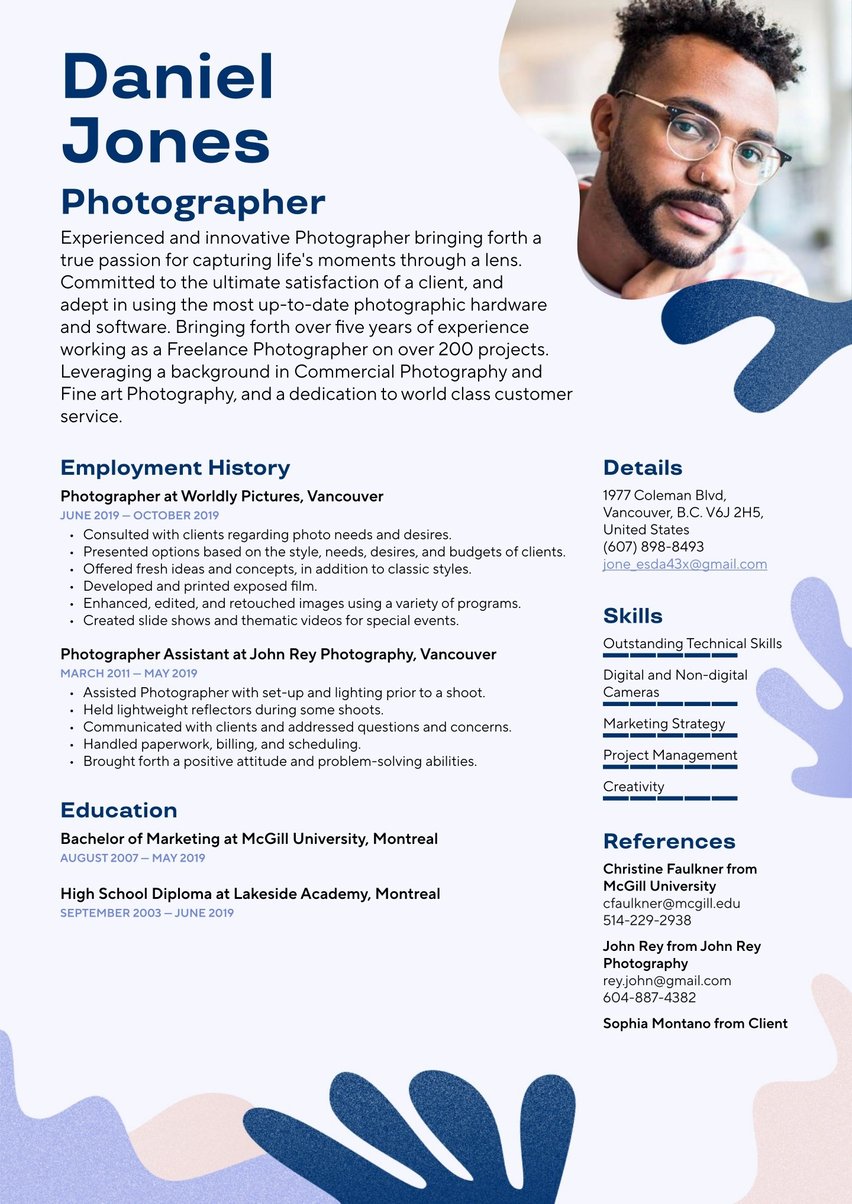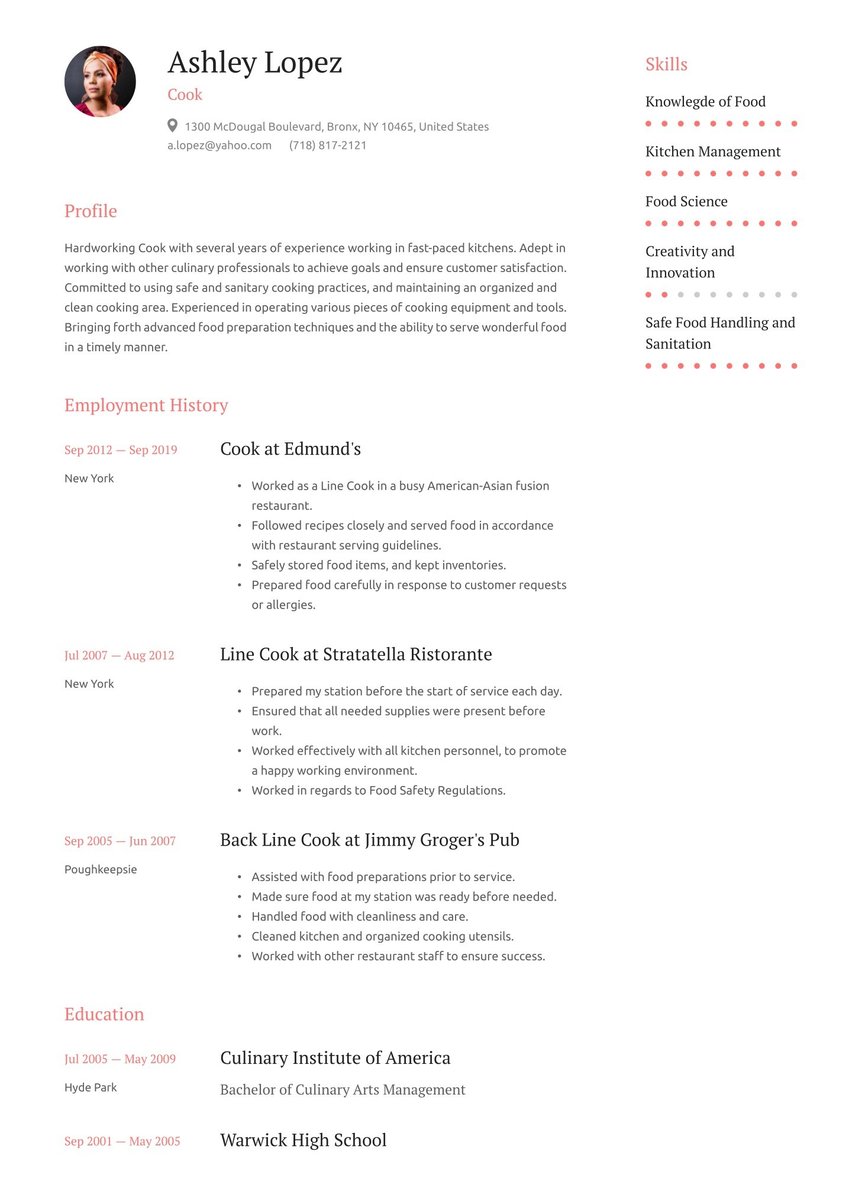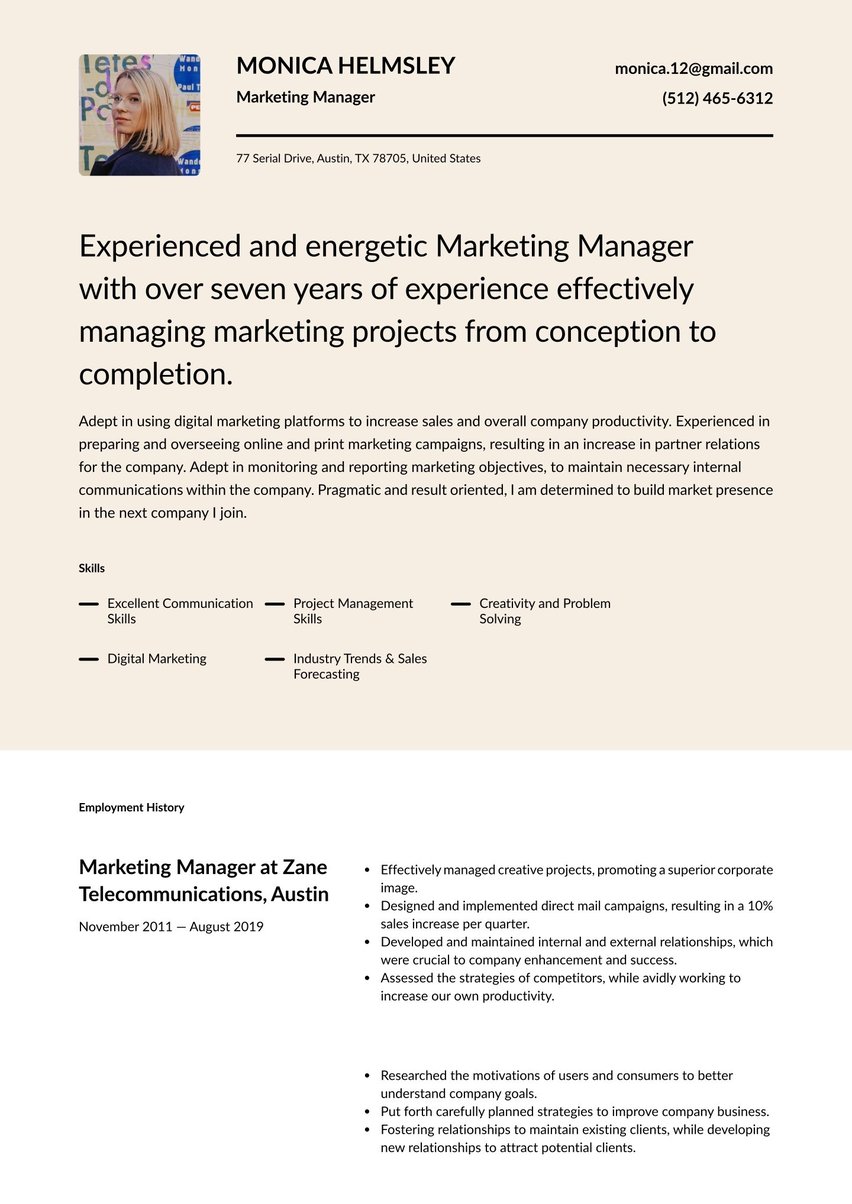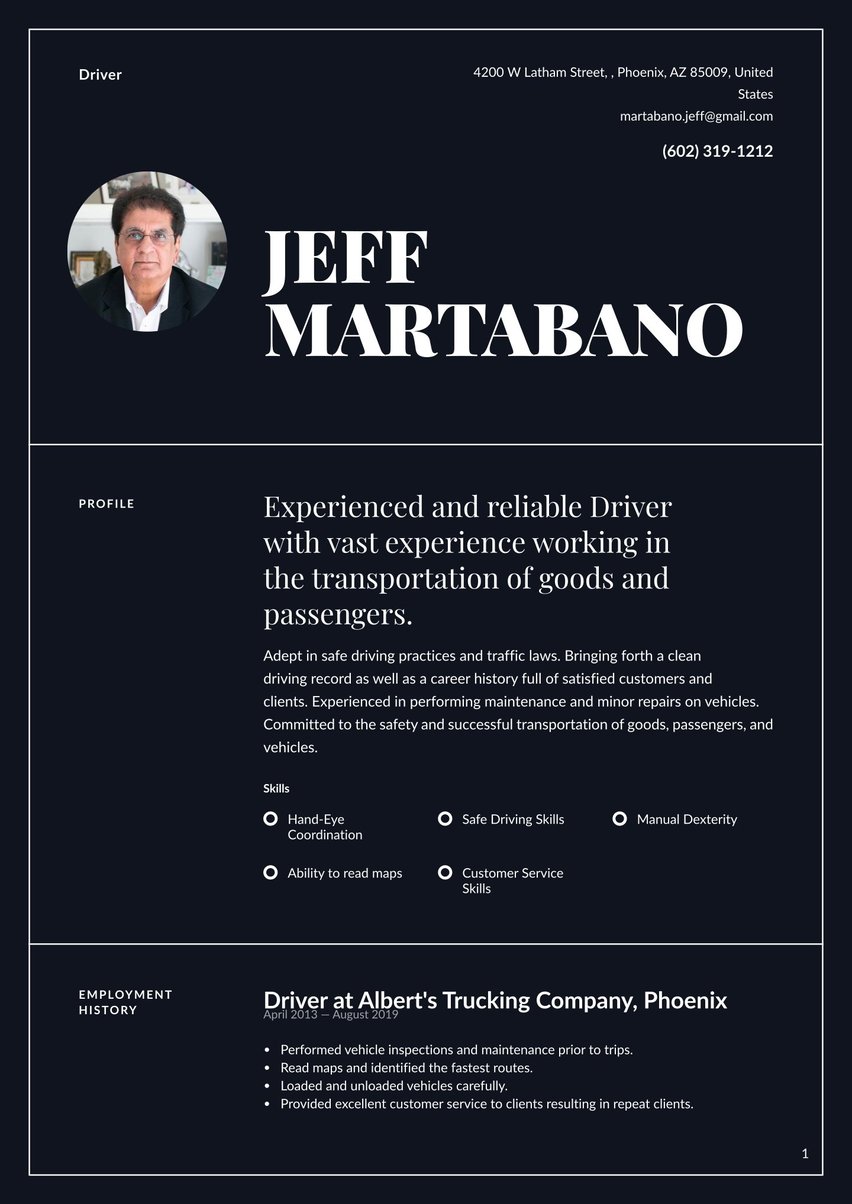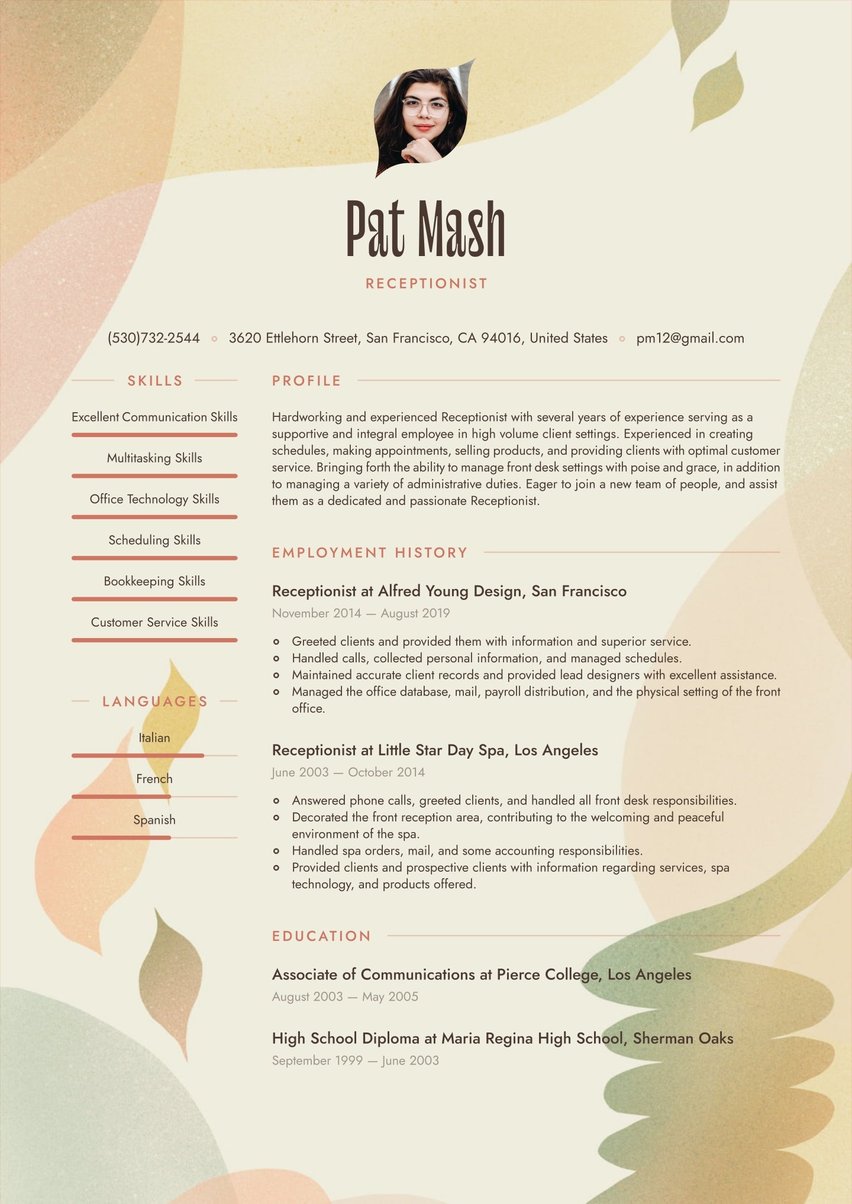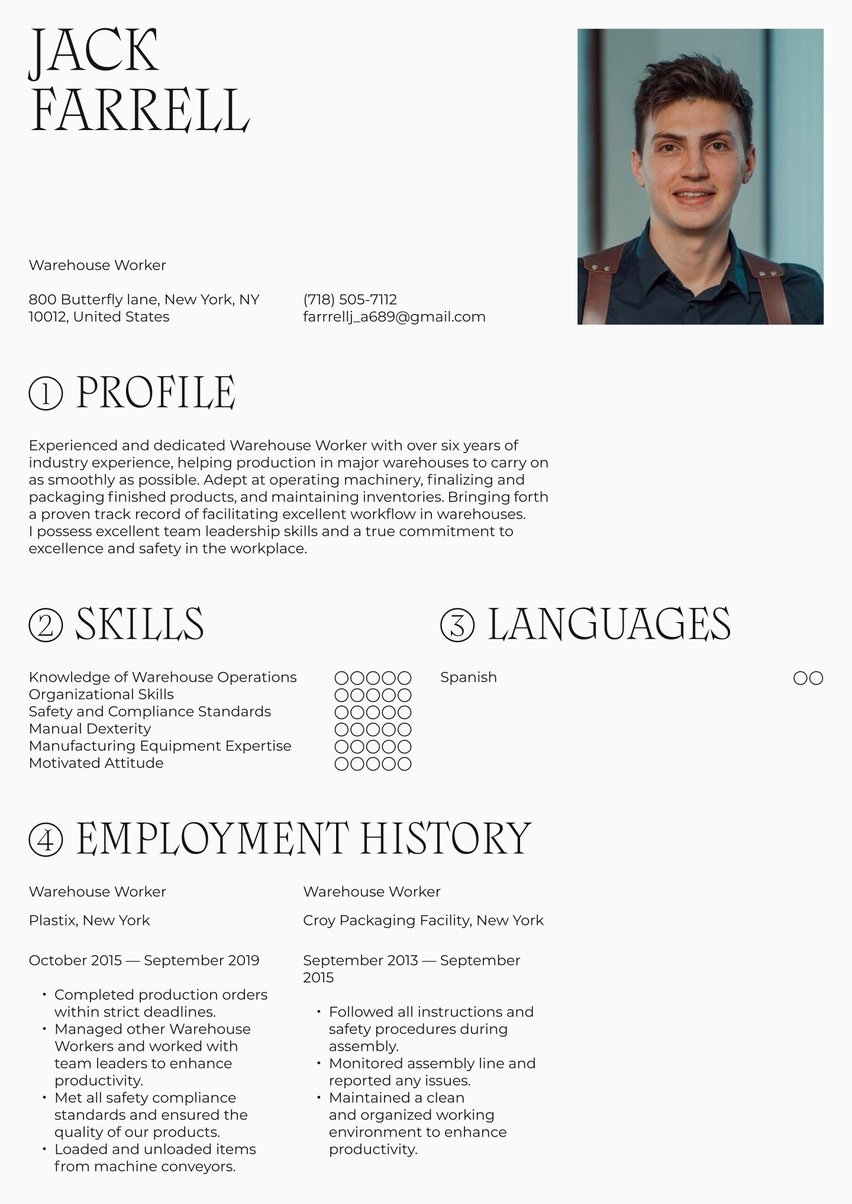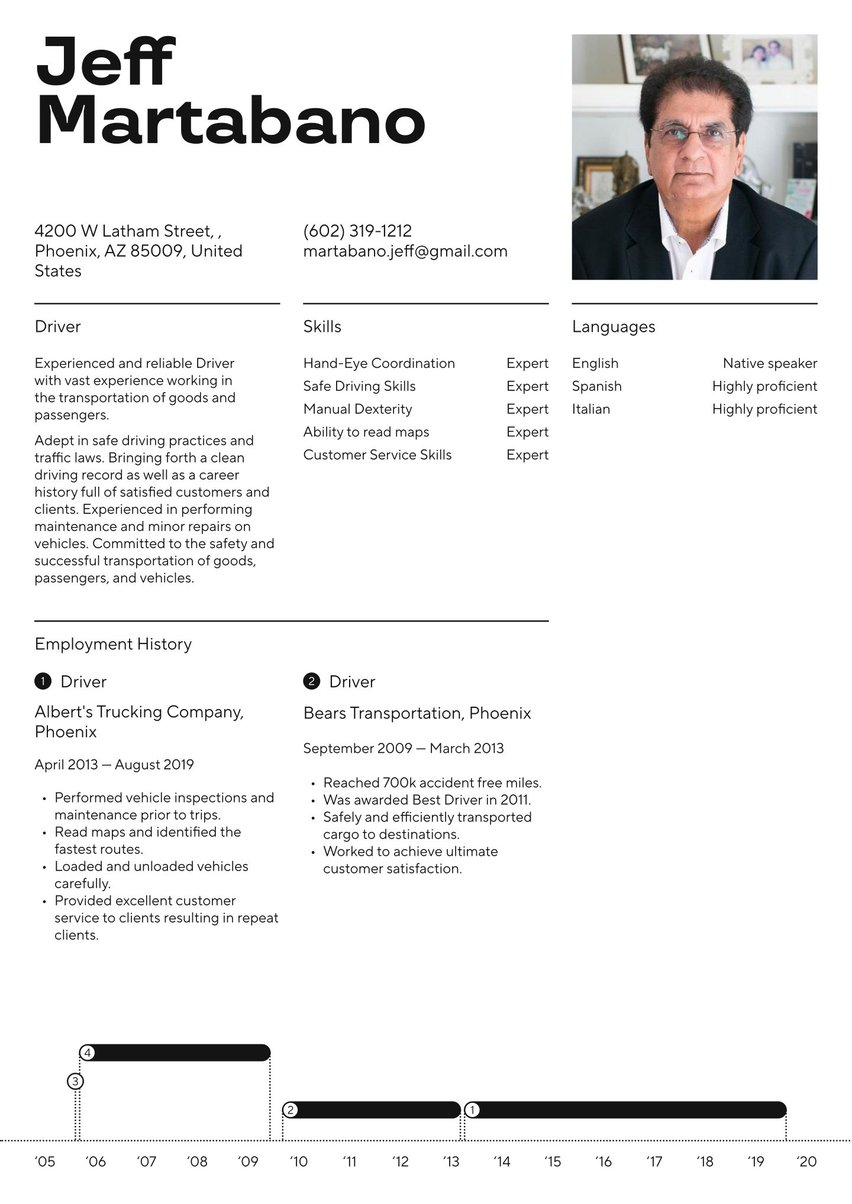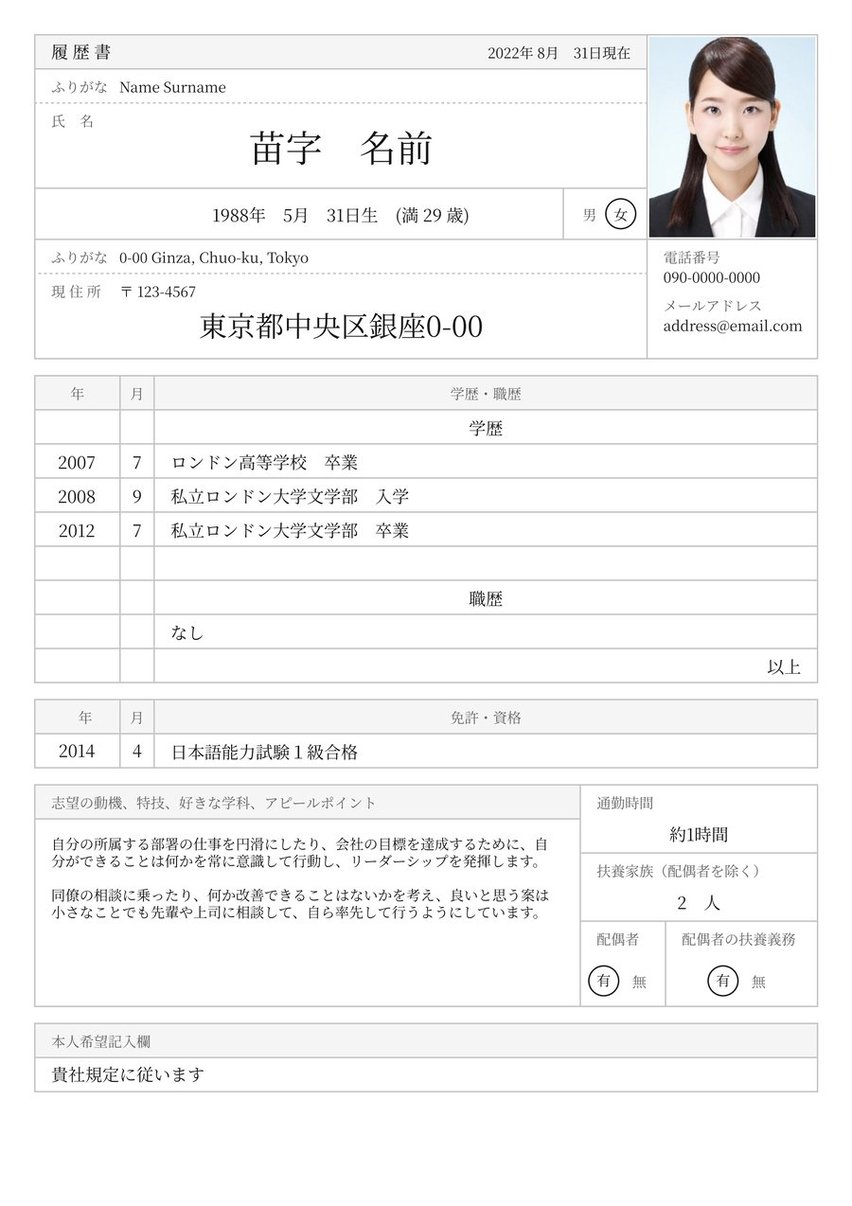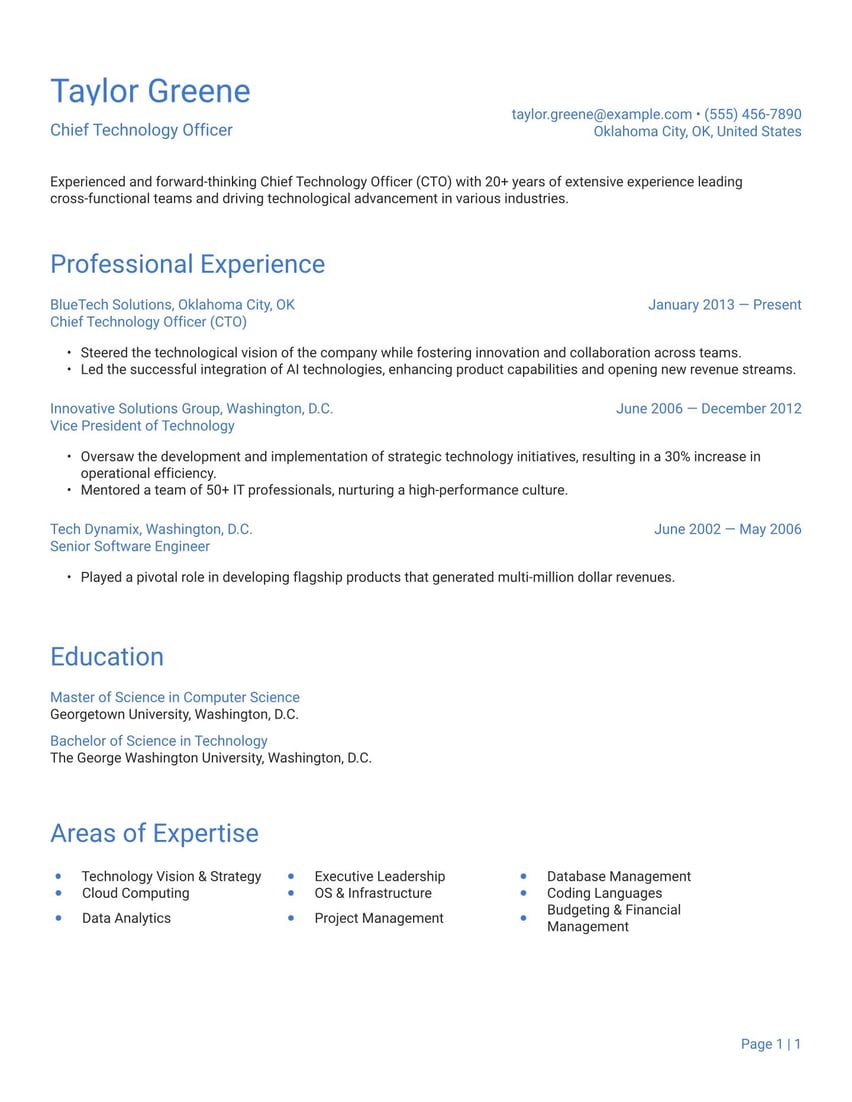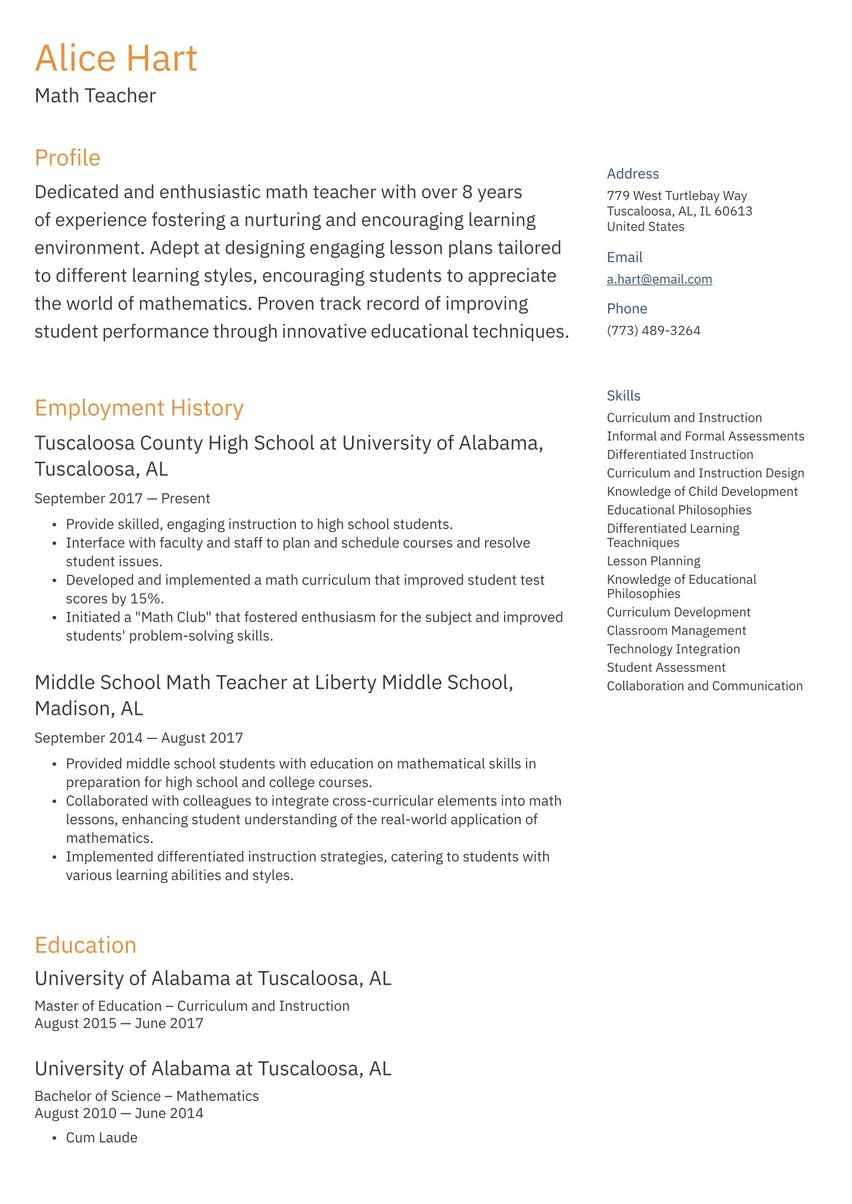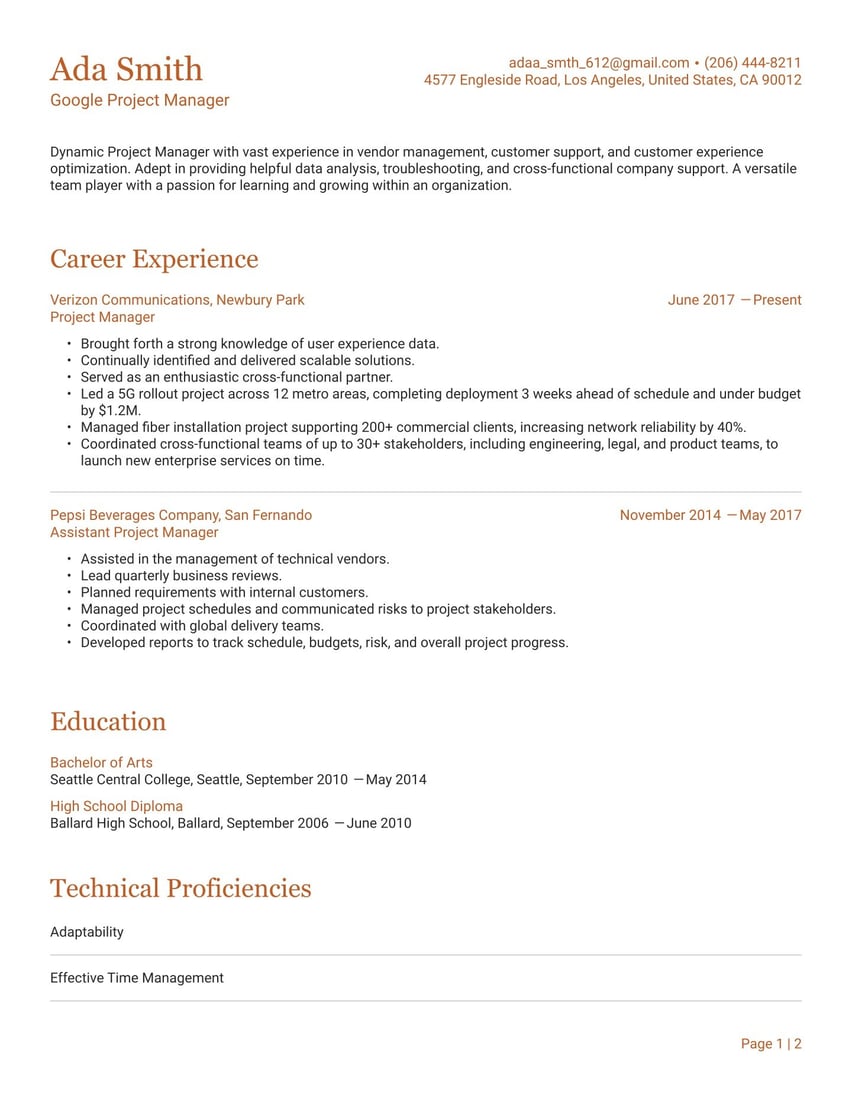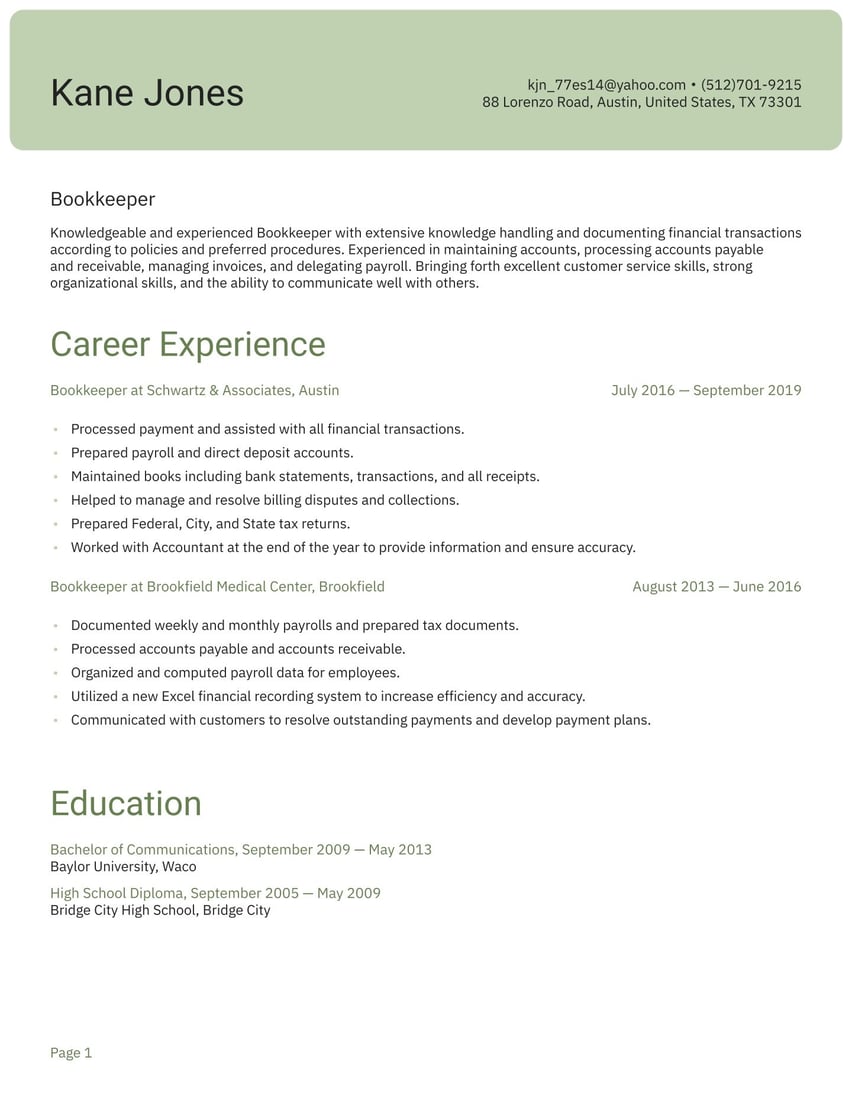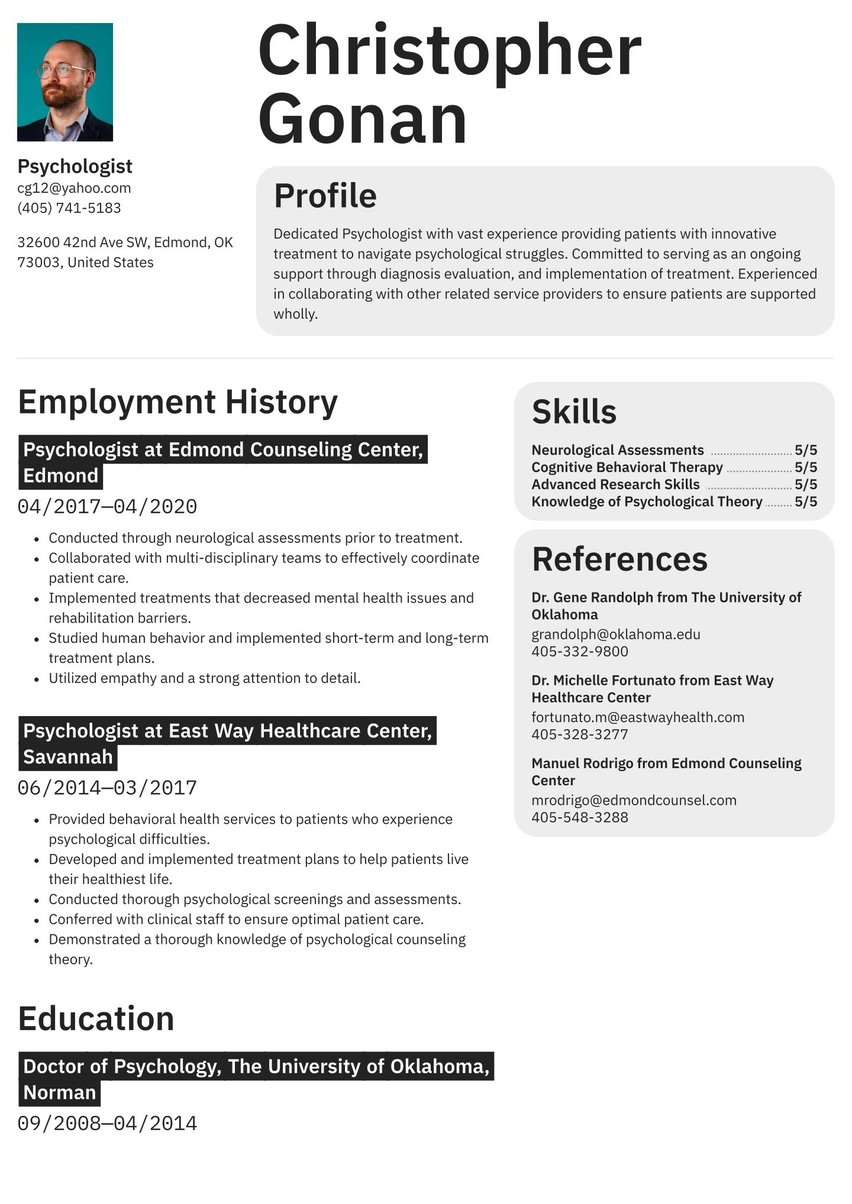08/2016 - 09/2019, HR Receptionist, McCann Agency, New York
- Worked as an energetic receptionist, using strong administrative skills to enhance company performance.
- Served as a main point of contact for the HR department.
- Wrote reports from dictation and reported to my superiors with said information.
- Made copies, sent faxes, made phone calls, and researched assignments for superiors.
- Organized and dispersed incoming mail to correct departments and employees.
- Reported to superiors on a weekly basis.
- Approached each work day with enthusiasm and a wonderful work ethic.
07/2013 - 07/2017, Head Counselor, Little Cat's Day Camp, White Plains
- Worked as a head counselor for a summer camp serving 280+ children.
- Organized and led group trips, remaining responsible for 20+ children at a time.
- Greeted families and campers with a friendly spirit and a helpful attitude.
- Handled disputes between campers with professionalism and sensitivity.
- Remained knowledgeable about the allergies and medical needs of campers, seeking medical attention whenever necessary.
- Served as a leader, and a confidante to countless campers.
- Promoted fun and learning each and every day.
08/2012 - 05/2016, High School Diploma, Greenwich Academy, Greenwich
- Graduated with High Honors.
- Member of the Swim Team.
- Member of the Softball team.
- Staff Writer of the Sacred Heart Newspaper.
- Member of the Photography Club.
- Graduated with High Honors.
- Interpersonal Communication Skills
- Love of Learning
- Analytical Thinking Skills
- Complex Problem Solving
- Photography Skills
- Time Management Skills
You’re looking beyond your high school career or maybe you took some time off and are ready to move onto university. You need a college admissions resume that tells admissions officers that you’re up to the academic challenge. But how do you develop a document that caters to the college and study program of your choice?
College Admissions resume examples by experience level
Resume.io can help. Our powerful resources include resume guides such as this and resume examples for 300+ professions, backed up by an easy-to-use resume builder. Take advantage of these tools to create a resume that makes the grade!
This resume guide, along with the corresponding resume example will cover the following topics:
- How to write a college admissions resume (tips and tricks)
- The best format for a college admissions resume
- Advice on each section of your resume (summary, work history, education, skills)
- Professional resume layout and design hints.
How to write a college admissions resume
The very first step in writing your college admissions resume is understanding what sections to include. Your resume should contain the following elements:
- The resume header
- The resume summary (aka profile or personal statement)
- The education section
- The employment history section
- The resume skills section
You have one or two colleges that are your top choices and you have your heart set on them, but you may also have a few other schools you’re applying to. Each school deserves your full attention. That means you need to tailor your college admissions resume for each school by doing your research. Get to know the makeup of the student body, what the program you intend to enroll in focuses on and what the school is known for.
A college admissions resume that will get you to the head of the class does the following:
- Speaks directly to the college in question and explains why you want to go there and how you will add to the student body.
- Pays attention to design and layout to give it a polished, mature look.
- Highlights the top criteria college admissions officers seek.
What do college admissions deans look for?
Applying to college in this post-lockdown era may be a bit different. Colleges understand the constraints of COVID have had lasting effects on young people. This is what they say they are looking for in candidates now, according to Grown & Flown:
- Self-care
- Academic achievement but with an understanding that many students suffered performance slippage during online learning.
- Contribution to the community
- Contribution to family life
- And as always, extracurriculars and summer activities
The college admissions landscape
Admission to the top tier of colleges is highly competitive and has only gotten more so in the past year. The numbers of applications are up, but the numbers of admissions are down. Less selective colleges admit many more of their applicants than those top tier colleges, so if you’re not looking to go to Harvard or Stanford and you are looking at smaller, lesser known colleges, you have a much better chance of getting into the school of your choice, according to the New York Times.
Stanford University had the lowest admissions rate of any U.S. college, at 4%. Columbia, the Curtis Institute of Music, and Harvard followed with 5% admission rates. You can see the entire list at U.S. News and World Report.
You can find details for any college in the United States at the National Center for Education Statistics College Navigator.
Choosing the best resume format for college admissions
For a job hunt resume, we recommend the standard reverse chronological order format most of the time, but your college admissions resume is likely to veer from that format. Unless you are returning to school after participating in the workforce for some years, you should choose a resume that focuses on your skills and academic achievements so far.
You may also consider a hybrid resume format, which begins with a skills or experience section before moving on to the employment history.

Resume summary example: you’re more than your GPA
You will write your college admissions essay with an eye toward illuminating what makes you an excellent candidate for your chosen university, but your resume summary gives you another chance at it. It’s likely there was something you wanted to say in that essay that did not fit in 500 words. You have 3-4 lines at the top of your resume, so say it here!
Try not to repeat information you offer elsewhere and remember that your goal is to answer the question: “How will you contribute to the student body and academic environment at our university.”
These other education resume samples may give you more ideas:
- Early Childhood Educator resume sample
- College Student resume sample
- High School Student resume sample
- Student resume sample
- Academic Librarian resume sample
- Health Educator resume sample
- ESL Teacher resume sample
- Tutor resume sample
- Teacher Assistant resume sample
- Substitute Teacher resume sample
- Middle School Teacher resume sample
- Elementary School Teacher resume sample
- College Professor resume sample
- Internship resume sample
- High School Teacher resume sample
- Academic Tutor resume sample
- Teacher resume sample
See the resume example text below for summary ideas.
Motivated and passionate student with the intention of gaining admission into your renowned University. Hardworking and driven, with goals of flourishing in your respected Liberal Arts program. Bringing forth a strong academic background with a steady GPA above 3.5, and a decorated Softball career resulting in a 2017 Championship for our school. Committed to working hard and serving my school, peers, and community.
Education section resume example: school is your job
For college admissions resumes, we recommend moving your education section to directly under your summary. Unless you are returning to college after a longer working break, this is where most of your achievements will fall. Think of your classes as work experiences and list your projects or proudest accomplishments within those classes. Highlight your collaborative skills as well as individual projects. If you have extracurricular activities, you may list them here along with your role or you may create a separate section.
Any honors or distinctions should be highlighted here as well, or in their own specific section on your resume.
AP computer science: Created program that collected and sorted data on class demographics.
AP computer science: Completed class with an A.
See resume sample content for an education section below.
High School Diploma, Greenwich Academy, Greenwich
August 2012 - May 2016
- Graduated with High Honors.
- Member of the Swim Team.
- Member of the Softball team.
- Staff Writer of the Sacred Heart Newspaper.
- Member of the Photography Club.
- Graduated with High Honors.
Skills section example: your talents on display
An outstanding college admissions resume, such as this example, will include a strong balance of soft skills and hard skills that make you stand out as a unique applicant. Choose attributes that your target college admissions officers have said they look for.
See resume example content for a skills section below.
- Interpersonal Communication Skills
- Love of Learning
- Analytical Thinking Skills
- Complex Problem Solving
- Photography Skills
- Time Management Skills
Employment history example: show off your soft skills
If you worked in the summer or after school, this is the place to list those jobs. Colleges want to know that you are responsible and know how to manage your time. Your part-time work shows them you have those attributes, so even if you think the job was menial or if you worked only one day a week, include it.
If you do not have any work experience, be sure to focus on your academic experiences and accomplishments.
Here's our resume sample content that showcases high school academic and extracurricular experiences.
HR Receptionist at McCann Agency, New York
August 2016 - September 2019
- Worked as an energetic receptionist, using strong administrative skills to enhance company performance.
- Served as a main point of contact for the HR department.
- Wrote reports from dictation and reported to my superiors with said information.
- Made copies, sent faxes, made phone calls, and researched assignments for superiors.
- Organized and dispersed incoming mail to correct departments and employees.
- Reported to superiors on a weekly basis.
- Approached each work day with enthusiasm and a wonderful work ethic.
Head Counselor at Little Cat's Day Camp, White Plains
July 2013 - July 2017
- Worked as a head counselor for a summer camp serving 280+ children.
- Organized and led group trips, remaining responsible for 20+ children at a time.
- Greeted families and campers with a friendly spirit and a helpful attitude.
- Handled disputes between campers with professionalism and sensitivity.
- Remained knowledgeable about the allergies and medical needs of campers, seeking medical attention whenever necessary.
- Served as a leader, and a confidante to countless campers.
- Promoted fun and learning each and every day.
Resume layout and design: creative yet professional
You’re taking a step up from your days of slapping stickers on your computer, or maybe not, but your resume layout and design should take a more mature approach. You may think that the way to stand out is to get overly creative, but that will just make your information difficult to read.
You don’t have to lose all personality, but make sure you present yourself as someone who paid attention to the details and takes the college admissions process seriously. You may use a bit of color or add a flourish to your contact information, but don’t go overboard. An easy way to accomplish this is by using a pre-designed resume template complete with professional fonts and an attractive header.
If you are applying to a creative department, you can err a bit on the side of artistic expression, but it is your portfolio that will show off your talents at their best.
If you don’t have one already, sign up for a professional sounding email address. Firstname.lastname@example.com is a format that works well. Definitely don’t use the silly one that’s an in-joke with your high school clique.
Take advantage of our expert-tested resume layouts to eliminate the time-consuming job of formatting and use our online resume builder with built-in spell check to avoid embarrassing (and potentially candidacy-damaging) typos.
College Admissions text-only resume example
Profile
Motivated and passionate student with the intention of gaining admission into your renowned University. Hardworking and driven, with goals of flourishing in your respected Liberal Arts program. Bringing forth a strong academic background with a steady GPA above 3.5, and a decorated Softball career resulting in a 2017 Championship for our school. Committed to working hard and serving my school, peers, and community.
Employment history
HR Receptionist at McCann Agency, New York
August 2016 - September 2019
- Worked as an energetic receptionist, using strong administrative skills to enhance company performance.
- Served as a main point of contact for the HR department.
- Wrote reports from dictation and reported to my superiors with said information.
- Made copies, sent faxes, made phone calls, and researched assignments for superiors.
- Organized and dispersed incoming mail to correct departments and employees.
- Reported to superiors on a weekly basis.
- Approached each work day with enthusiasm and a wonderful work ethic.
Head Counselor at Little Cat's Day Camp, White Plains
July 2013 - July 2017
- Worked as a head counselor for a summer camp serving 280+ children.
- Organized and led group trips, remaining responsible for 20+ children at a time.
- Greeted families and campers with a friendly spirit and a helpful attitude.
- Handled disputes between campers with professionalism and sensitivity.
- Remained knowledgeable about the allergies and medical needs of campers, seeking medical attention whenever necessary.
- Served as a leader, and a confidante to countless campers.
- Promoted fun and learning each and every day.
Skills
- Interpersonal Communication Skills
- Love of Learning
- Analytical Thinking Skills
- Complex Problem Solving
- Photography Skills
- Time Management Skills
Education
High School Diploma, Greenwich Academy, Greenwich
August 2012 - May 2016
- Graduated with High Honors.
- Member of the Swim Team.
- Member of the Softball team.
- Staff Writer of the Sacred Heart Newspaper.
- Member of the Photography Club.
- Graduated with High Honors.
Key takeaways for a college admissions resume
- Target each university by understanding what that school values and its educational philosophy.
- Use your summary section to complement your college admissions essay.
- Focus on your academic achievements and extracurricular activities.
- Find a great example of page design in our college admissions resume sample.


.jpg)

.jpg)










